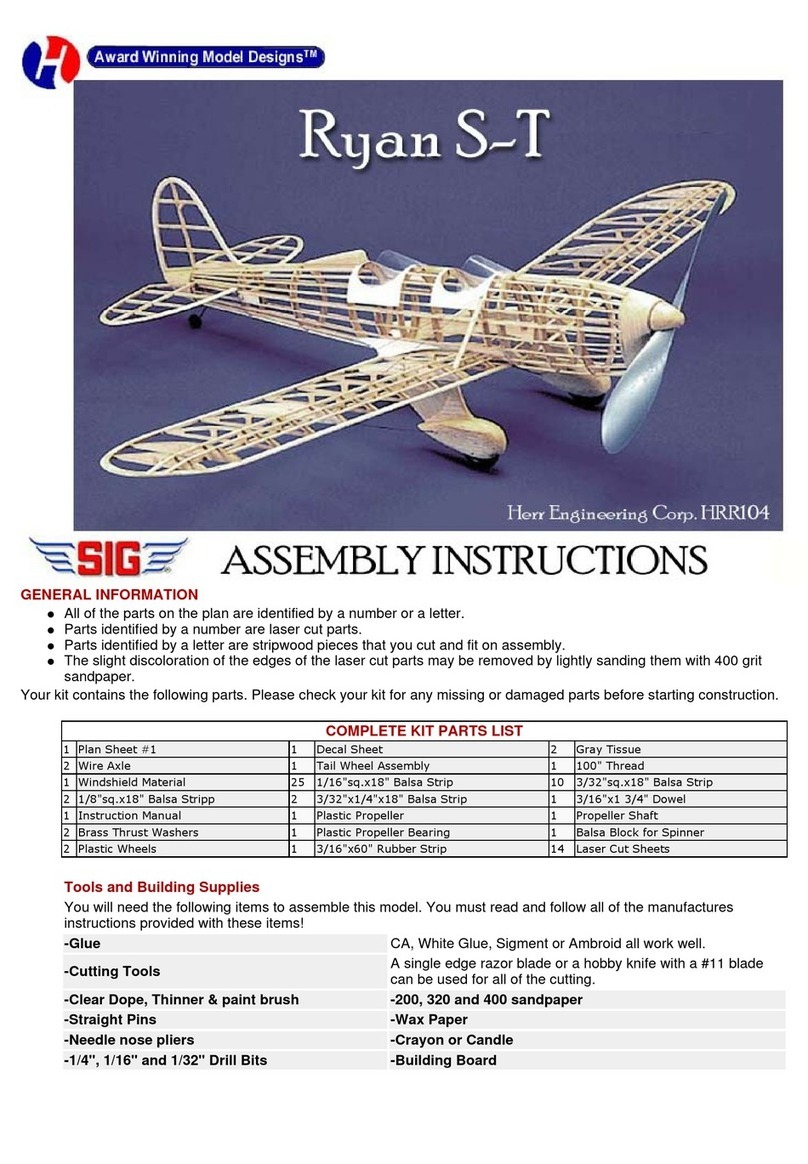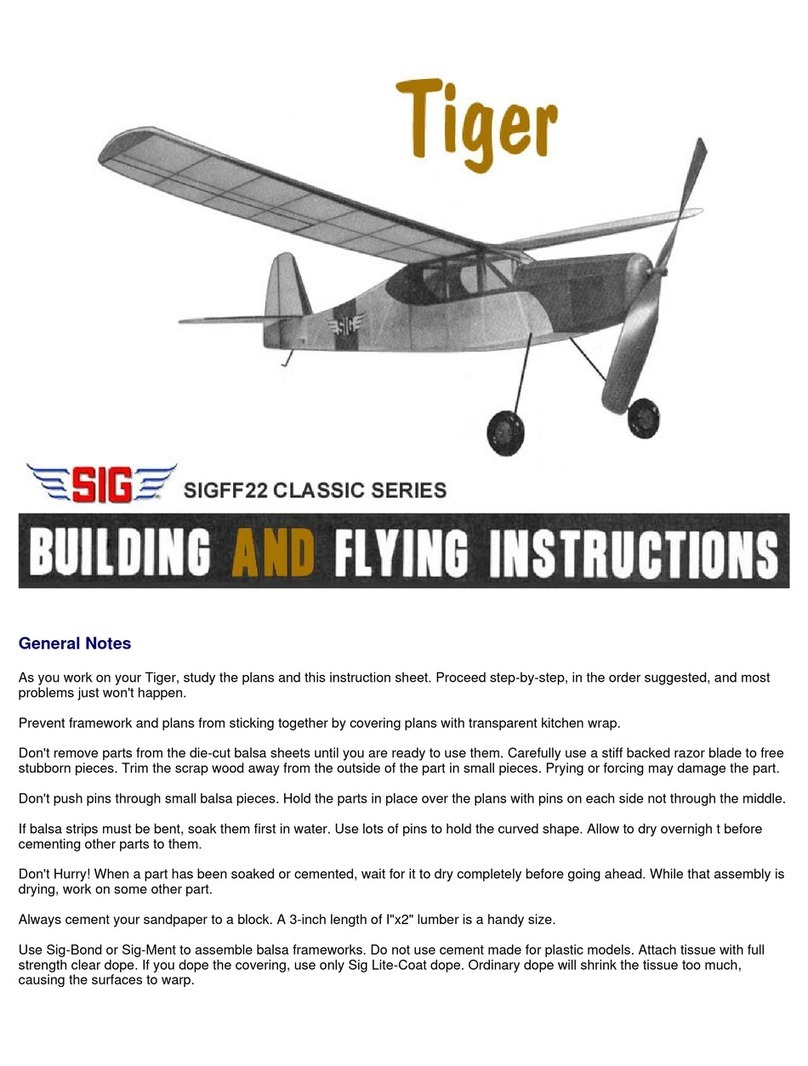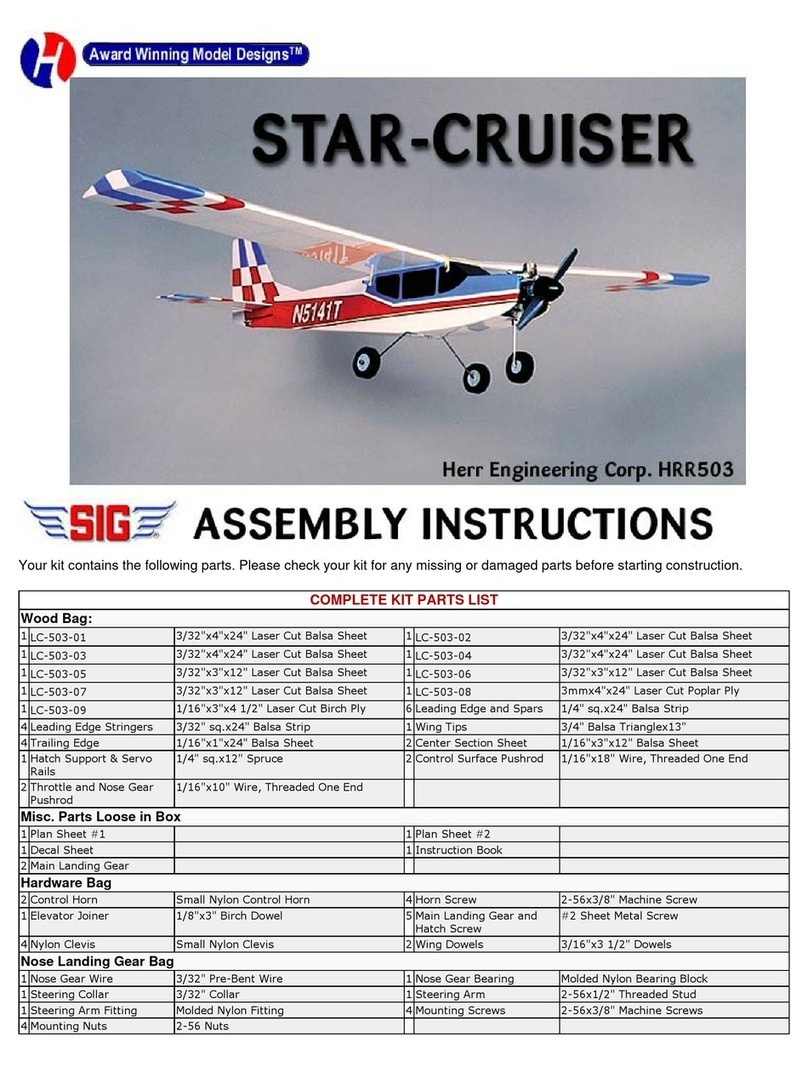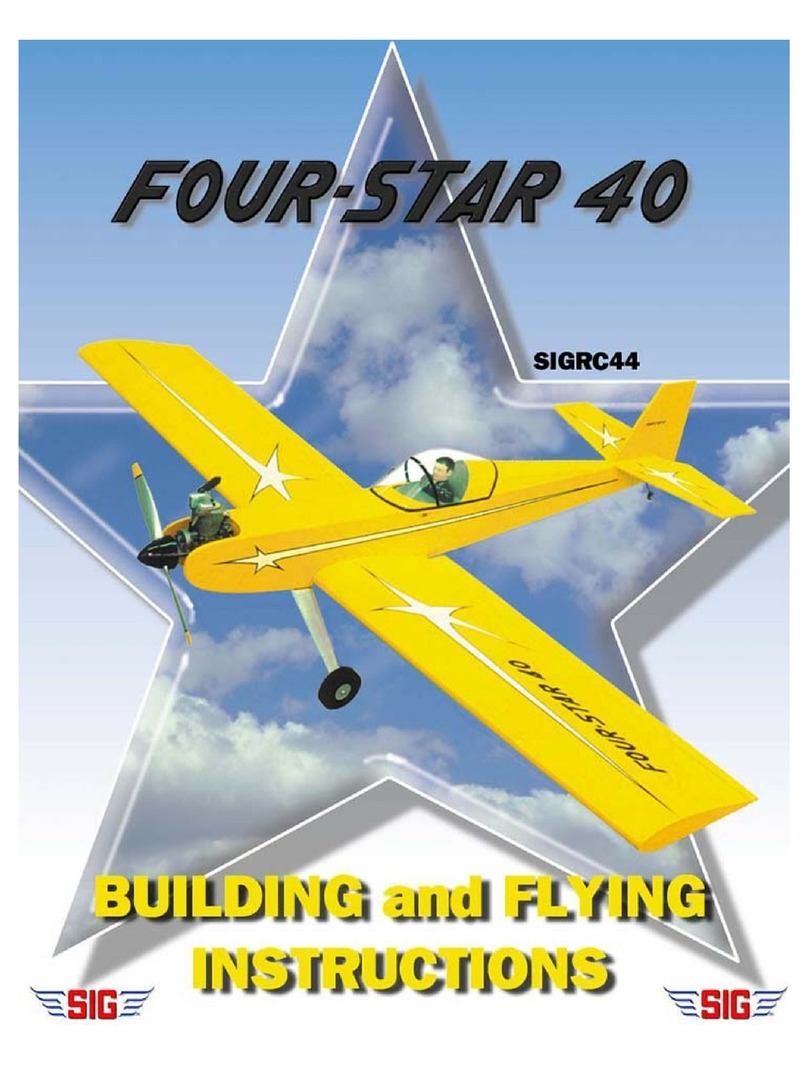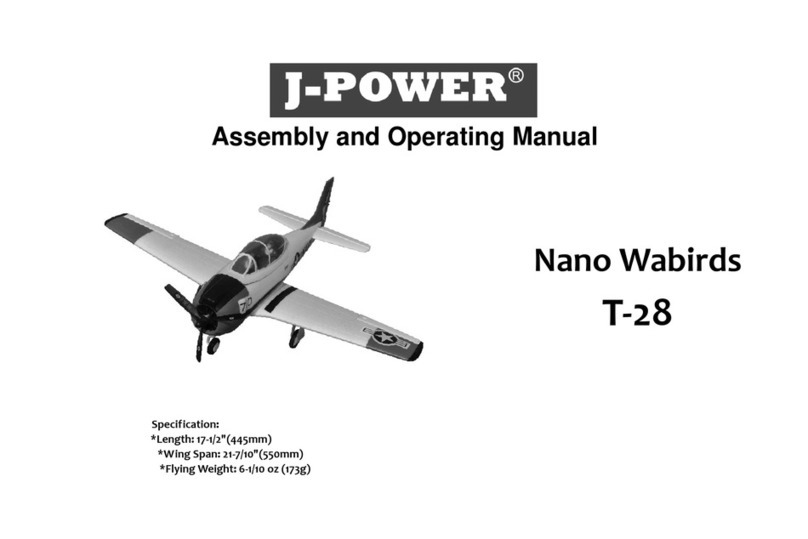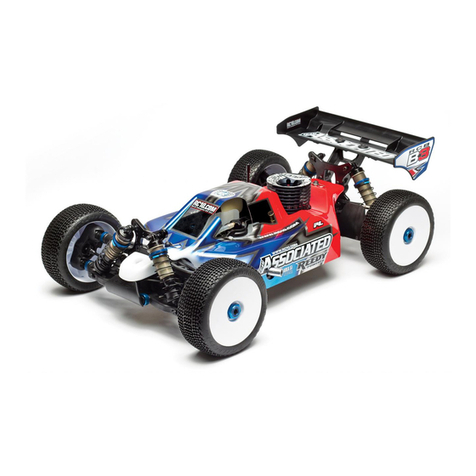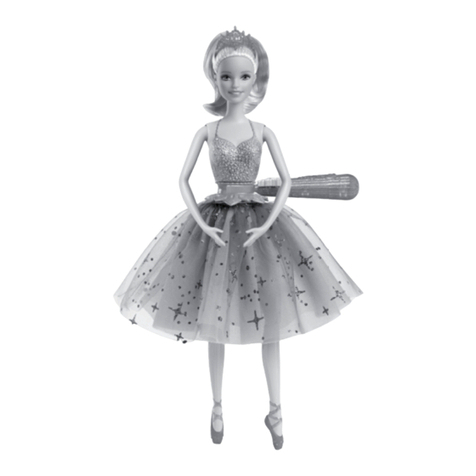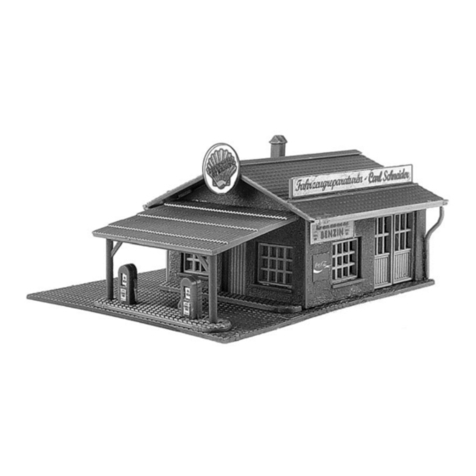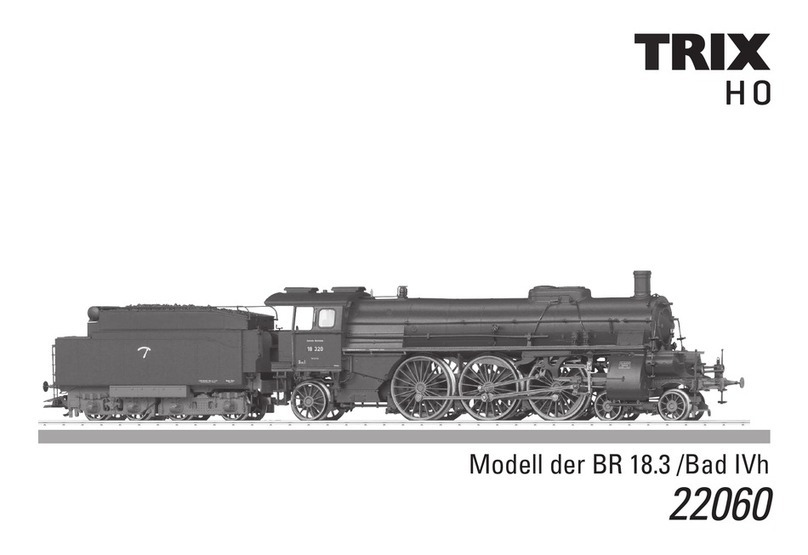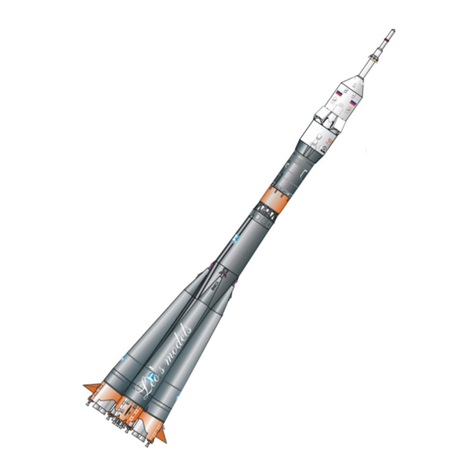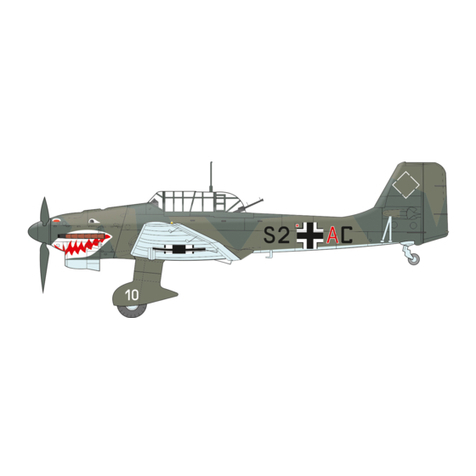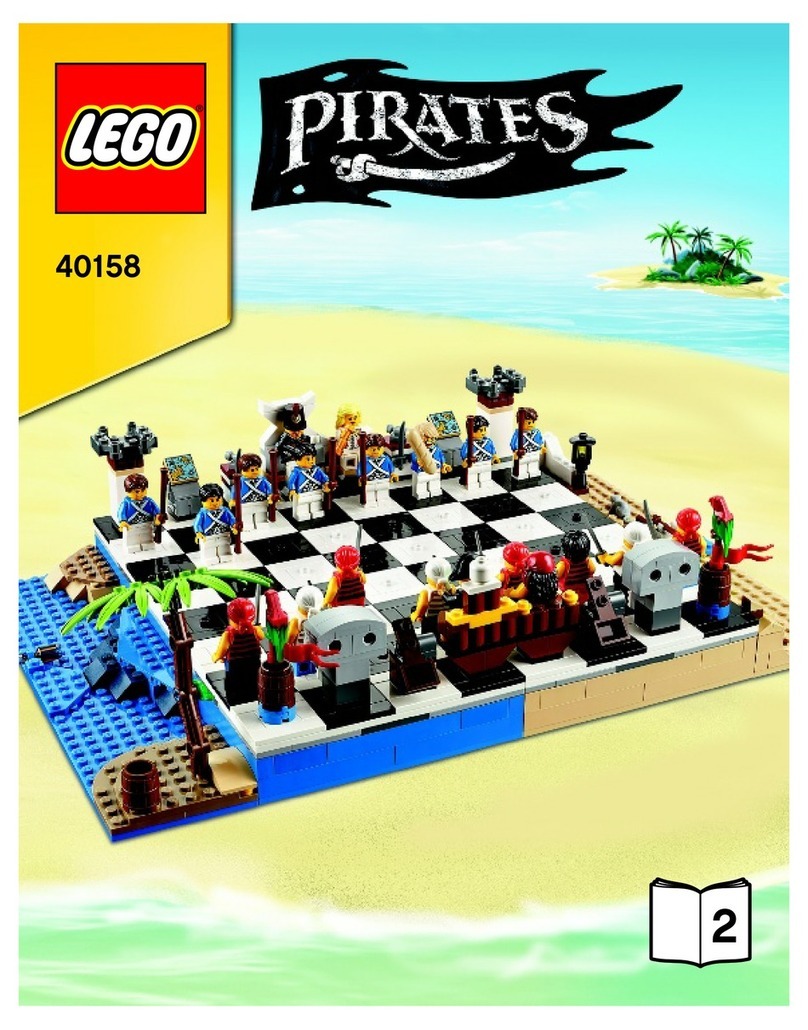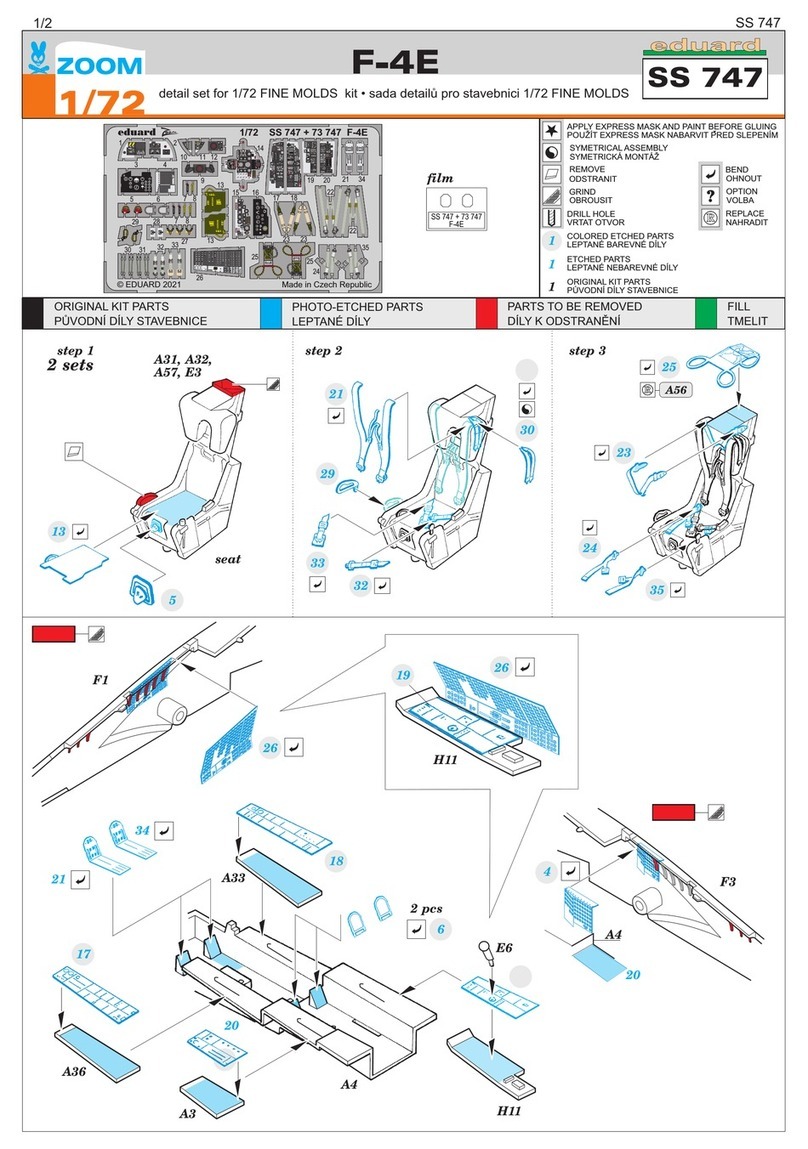SIG 3D MAYHEM ARF User manual

Note:
The large control throws used in 3D flying require a servo
with precise centering capability. The new digital type servos have
outstanding centering characteristics and are highly recommended
for serious 3D flying. You can not expect this airplane to give you
optimum 3D performance using non-ball-bearing standard servos.
SERVO CHORDS NEEDED:
Ailerons - one standard y-harness
and
two 6” or two 12” servo extension chords
(depending upon the length of the pigtail wires on
your particular servos)
Elevator - one 24” servo extension chord
HEAVY-DUTY SERVO ARMS:
Larger than stock size servo arms are needed to achieve the large
3D control throws. We recommend Du-Bro®"Super Strength"
Servo Arms, which are available to fit any brand of servo. They are
very strong and work well with this model.
ENGINE SELECTION:
Engine choices for the 3D MAYHEM are many. The MAYHEM has
been designed to perform well when using the recommended
engine sizes. Do not use an engine larger than recommended.
RECOMMENDED ENGINES:
.72 to .91 cu.in. 2-Stroke
.72 to 1.20 cu.in. 4-Stroke
Very Important: The 3D MAYHEM is designed for slow speed, high
torque aerobatics. It’s fantastic low speed maneuverability is the
result of light weight and very large control surfaces - which are
naturally prone to flutter if flown at excessive airspeeds. To avoid
problems, follow these carefully tested guidelines:
1) Do not use engines larger than recommended. Resist the
urge to overpower your 3D MAYHEM with larger engines, which
can cause balance and structural problems, and produce
excessive airspeed.
2) Do not use a propeller with more than 6 inch pitch. Keep the
airspeed of the MAYHEM down by using low pitch propellers.
3) Do not fly full throttle except during climbs of at least 10
degrees. Always throttle back when in a dive.
Ignoring these cautions will put your model at high risk for
catastrophic in-flight structural failure.
REQUIRED TOOLS:
For proper assembly, we suggest you have the following tools and
building materials available:
A selection of glues - thin, medium, and thick SIG CA, and
SIG Epoxy Glue (5-minute and 30-minute)
R
1
3D MAYHEM ARF ASSEMBLY MANUAL
INTRODUCTION:
Congratulations on your purchase of a SIG 3D MAYHEM ARF.
This is not your average R/C aerobatic flyer! Properly assembled,
powered and flown, the 3D MAYHEM can take you into the
exciting world of 3D aerobatic flying. Generous wing area,
lightweight construction, and huge control surfaces with large
amounts of travel, enable the 3D MAYHEM to perform the extreme
3D maneuvers you've been reading about…hovering, harriers,
waterfalls, blenders…the 3D MAYHEM can do them all.
NOTE: The 3D MAYHEM is not suitable for beginners. While it is
a terrific flying airplane, it's neutral stability and quick controls are
beyond the capabilities of beginning R/C pilots. You should be
capable of flying low-wing, aileron equipped R/C models before
flying this airplane.
EASY TO ASSEMBLE:
The 3D MAYHEM ARF has been engineered to get you into the
air as quickly as possible with an R/C model that compares to the
best scratch-built airplanes. The airframe has been expertly
constructed of the finest balsa and plywood available, then
professionally covered with tough Oracover®polyester film. The
airplane is both rugged and easy to repair.
This assembly manual has been sequenced to get your MAYHEM
assembled and into the air very quickly. We strongly suggest that
you read through the manual first to familiarize yourself with the
various parts and assembly sequences. The successful assembly
and flying of this airplane is your responsibility. If you deviate from
these instructions, you may wind-up with problems later on.
RADIO EQUIPMENT:
We highly recommend the use of a modern programmable
computer radio. Such radio systems allow you to easily set and
adjust every channel and additionally program various flight
functions to suit your individual style of flying.
The 3D MAYHEM requires a 4 (or more) channel radio system with
five servos.
SERVO REQUIREMENTS:
Ailerons - two (2) ball bearing servos with 70+ in/oz of torque
Elevator - one (1) ball bearing servo with 70+ in/oz of torque
Rudder - one (1) ball bearing servo with 90+ in/oz of torque
Throttle - one (1) standard servo
All servos are standard size dimensionally.

Threadlock Compound, such as Loctite®Non-Permanent Blue
Silicone Sealer - clear or white
Screwdriver Assortment
Pliers - Needle Nose & Flat Nose
Diagonal Wire Cutters
Small Allen Wrench Assortment
Drill with Assorted Drill Bits
Pin Vise for Small Dia. Drill Bits
Hobby Knife With Sharp #11 Blades
Scissors
Covering Iron and Trim Seal Tool
Masking Tape
Paper Towels
Power Drill With Selection of Bits
Dremel®Tool with Selection of Sanding and Grinding Bits
Soldering Iron and Solder
Large Fuel Tubing
KIT CONTENTS INVENTORY:
The following is a complete list of all parts contained in this kit.
Before beginning assembly, we suggest that you take the time to
inventory the parts in your kit, using the check-off boxes (❑)
provided. Note that the CA type hinges for the ailerons, rudder,
and elevators are in place in each of these parts but are not yet
glued in place. Also, note that the nuts and bolts required to mount
your engine to the motor mounts are not included in this kit and
must be purchased separately.
Note: The “PWA” designation for some of the bolts and screws in
the following list means it has a “Phillips Washer Head”.
BASIC AIRCRAFT PARTS (covered with Oracover ):
1 bag ❑(1) Right Wing Panel & Right Aileron, with
❑(6) CA Hinges installed but not glued
1 bag ❑(1) Left Wing Panel & Left Aileron, with
❑(6) CA Hinges installed but not glued
1 bag ❑(1) Fin & Rudder Set, with
❑(3) CA Hinges installed but not glued
1 bag ❑(1) Stabilizer & Elevator Set, with
❑(6) CA Hinges installed but not glued
1 bag ❑(1) Fuselage, with
❑(1) Clear Plastic Canopy installed
❑(4) M2 x 8mm PWA Mounting Screws, for canopy
❑(2) 1/4-20 Blind Nuts installed, for wing attachment
❑(3) M4 Blind Nuts installed, for l.g. attachment
❑(1) Plastic Antenna Tube installed
1 bag ❑(1) Fuselage Bottom Fairing
OTHER PARTS:
1 bag ❑(1) Fiberglass Cowling, white
❑(4) M2.6 x 10mm PWA Mounting Screws
1 bag ❑(1) Right Fiberglass Wheel Pant, white
❑(1) Left Fiberglass Wheel Pant, white
1 bag Main Landing Gear Parts:
❑(1) Aluminum Landing Gear
❑(3) M4 x 15mm PWA Mounting Bolts
❑(2) M4 x 34mm PWA Axle Bolts
❑(2) M4 Lock Nuts
❑(4) M4 Hex Nuts
❑(2) 2-3/4" dia. Main Wheels
❑(4) M3 x 10mm PWA Mounting Bolts, for wheel pants
❑(4) M3 Split Lock Washers, for wheel pants
1 bag Tailwheel Assembly:
❑(1) Leaf-Spring with Steering Arm, Yoke, & Tailwheel
❑(3) 3mm x 10mm PWA Mounting Screws
❑(2) Coil Steering Springs
❑(1) Metal Rudder T-Horn
❑(2) 2mm x 9mm PWA Mounting Screws, for T-Horn
1 bag Fuel Tank Assembly:
❑(1) 450cc (15.2 oz.) Plastic Tank
❑(1) Rubber Stopper
❑(1) Metal Front Clamp
❑(1) Metal Rear Clamp
❑(1) M3 x 18mm Clamp Bolt
❑(1) Metal Clunk Pickup
❑(1) Fuel Pickup Tubing, for inside tank
❑(1) 3mm od x 40mm long Aluminum Tube
❑(1) 3mm od x 47mm long Aluminum Tube
❑(1) 3mm od x 60mm long Aluminum Tube
❑(1) .093" id x .195" od x 9" Fuel Tubing
❑(1) .093" id x .195" od x 9" Fuel Tubing
1 bag 2-3/4" Dia.White Spinner Assembly:
❑(1) Plastic Spinner Cone
❑(1) Plastic Spinner Backplate
❑(1) Plastic Prop Shaft Adapters
❑(4) Screws
1 bag ❑(2) Glassed-Filled Engine Mounts
❑(4) M4 x 25mm PWA Mounting Bolts
❑(4) M4 Blind Nuts
❑(4) M4 Flat Metal Washers
❑(4) M4 Split Lock Washers
1 bag Throttle Pushrod Assembly:
❑(1) 1/8”od x 15-3/4”Plastic Pushrod Tube
❑(1) 3/16”od x 13-3/4”Plastic Pushrod Sleeve
❑(1) Threaded Stud with Metal R/C Link, for servo end
❑(1) Threaded Stud with Nylon R/C Link, for eng. end
❑(2) Laser-Cut Plywood Pushrod Supports
1 bag Aileron & Elevator Pushrods:
❑(3) 4-40 x 3”Threaded Pushrods
❑(6) 4-40 Metal R/C Links
❑(6) 4-40 Hex Nuts
❑(6) Spring Keepers
1 bag Misc. Control System Parts:
❑(2) .023" dia. Steel Cables,
for pull-pull rudder linkage
❑(4) Rigging Couplers w/ R/C Link & Knurled Stop Nut,
for pull-pull rudder linkage
❑(4) 2mm od x 4mm Metal Tubes,
for pull-pull rudder linkage
❑(3) Right Control Horns,
for elevator(1), aileron(1), rudder(1)
❑(2) Left Control Horns,
for aileron(1), rudder(1)
❑(12) 2.6mm x 10mm Mounting Screws,
for aileron & elevator control horns
❑(4) M2.5 x 14mm Mounting Bolts,
for rudder control horns
❑(4) M2 Hex Nuts, for rudder control horns
❑(4) M2.5 Split Lock Washers,
for rudder control horns
1 bag Misc. Parts:
❑(1) Hardwood Front Wing Joiner
❑(2) 1/4-20 x 2" Nylon Wing Bolts
❑(2) Fiberglass Wing Bolt Guides
❑(1) Plywood Wing Bolt Plate
❑(1) 3/8" x 1/2" x 4" Balsa Stick,
for fuel tank rear support
MISCELLANEOUS:
❑1 EACH #SIGDKM279 3D MAYHEM Decal Sheet
❑1 EACH #SIGIB279 3D MAYHEM Assembly Manual
2
®

3
COVERING MATERIAL:
Your 3D MAYHEM ARF has been professionally covered with
premium Oracover®polyester film covering. The Oracover®colors
are #10 White, #23 Red, #52 Blue, and #71 Black. (Note: In the
United States, Oracover®is sold under the name of Hangar 9
Ultracoat®. The equivalent Ultracoat®colors are called #870 White,
#866 True Red, #885 Midnight Blue, and #874 Black).
You may notice that some wrinkles might develop in the covering
after removing the parts from their plastic bags. If that is the case,
there is no need to be alarmed. This is perfectly normal in low
humidity climates. Your model was built and covered in a part of
the world with relatively high humidity and therefore the wood was
likely carrying a fair amount of moisture. When exposed to drier air,
the wood typically loses this moisture, dimensionally "shrinking"
slightly in the process. In turn, this causes the wrinkles.
Any wrinkles that appear in the covering are easy to remove by
using a hobby-type heat iron. We suggest covering the iron's
shoe with a thin cotton cloth, such as an old T-shirt, to prevent
scratching the film. The iron should be set to about 280O- 300OF.
First, use the heated iron to go over all the seams and color joints
in the covering, making they are all sealed down and well adhered.
Then use the heated iron to lightly shrink the material - do not
press on it. Once the covering is tight, lightly iron the material back
down to the wood. You can also use a hobby-type heat gun to
re-shrink the covering, but you must be extra careful around the
seams. Re-heating seams may cause them to "creep", making
them unsightly.
MODELER’STIP: One of the most common problems associated
with shrinking any covering film is controlling the heat around
seams. Heat applied close to or directly onto seams reheats the
covering adhesive and the seam will often "crawl". This is easy to
control. Just tear a few paper towels into strips and soak them in
cool tap water. Lay the wet strips over any covering seam and use
your heat gun or iron as you normally would. The wet strips keep
the seam cool while the covering immediately next to it shrinks.
WARPS!
Light weight is a key ingrediant in the 3D MAYHEM’S flight profile.
Because of their light weight construction, the ailerons, elevators,
and rudder of the MAYHEM can become warped whenever the
covering material is heated for shrinking. Care must be used to
make sure that the control surfaces remain straight as the covering
cools. Avoid putting a twist in the part while taking out wrinkles.
If you find a warp in one of your parts, the warp can almost always
be removed by twisting the surface in the opposite direction and
holding it there while heat is applied to the covering material. After
the covering cools, release the control surface and recheck for the
warp. The amount of reverse twist and heat that you apply, will
determine where the control surface ends up after it cools.
Note: When trying to remove a warp, an extra set of hands are
needed. Have someone assist you. While one person holds the
reverse twist in the control surface, the other person applies the
heat by passing a covering iron over both sides of the part.
WING ASSEMBLY - OVERVIEW:
The wing of the MAYHEM comes in two pieces, a right wing panel
and a left wing panel, which will be permanently glued together to
make a strong one-piece wing.
For precise control of the ailerons, there is one aileron servo
mounted in each wing panel.
As received in the kit, the wing panels have the ailerons in place
but not yet permanently hinged. Hinging the ailerons will be done
later. For now, remove the ailerons from the wing panels and pull
out all the CA hinges and set them aside until called for.
To avoid unnecessary dents, dings, or scuffing of the airplane
parts, we suggest that you cover your workbench with a soft
household blanket or foam sheet while assemblying your model.
WING ASSEMBLY, PART I: Installing the aileron servos
For the following steps you will need these parts:
•1 - Right Wing Panel
•1 - Left Wing Panel
•2 - Aileron Servos (not supplied)
•2 - 6”or 12”Servo Extension Chords (not supplied)
[actual length you need depends upon the length of the
pigtail wires on your particular servo.For the Hitec®servos
shown in the pictures, we used 6”extension chords.]
•1 - ServoY-Harness Chord (not supplied)
❑1) Before installing the aileron servos in the wing, you must
attach a servo extension chord onto the end of the aileron servo
wire. The combined length required is approximately 21”.A6”or
12”extension chord will usually provide sufficient length. Plug the
extension chord onto the servo wire and secure well with tape.
Also, install the mounting grommets and eyelets onto the servo as
described in the instructions that came with your servos.
❑2) Inside the aileron servo bay opening, you will find a short
length of wood with a string tied to it. The string will be used to pull
the aileron servo wire through the wing panel to the center of the
wing. Gently break the wood piece loose from the wing structure,
and pull it and the string a few inches out of the servo bay
opening. Remove the wood from the string and disgard it. Tie the
end of the string securely to the end of the servo wire, as shown.
❑3) On the top of each wing panel, just inboard of the center
wing rib, you will find another opening. This is the exit hole for the
aileron servo wire. Inside this opening you will see another piece
of wood with a string tied to it. This is the other end of the string in
the aileron servo bay. Break the wood piece loose and carefully
pull the string and servo wire through the wing until the servo wire
emerges from the opening in the top of the wing.
Note: You may occasionally feel like the wire has become stuck
inside the wing. This is simply the plug on the end of the servo wire

4
hitting the side of the holes in the wing ribs. Gently work the string
back and forth from both ends until the plug fits through the hole.
Sometimes the servo plug comes through all the ribs the first time
without getting hung up, and other times it seems like it gets hung
up on every rib. Be patient and don’t try to force it. The holes in
the ribs are large enough to get any common servo plug through.
Sometimes it helps to hold the wing panel vertically (center end
down) and shake it slightly while pulling lightly on the string.
❑4) After you get the end of the servo wire all the way through
the wing, tape the loose end of the wire to the wing's top surface,
so that it won't fall back inside the wing.
❑5) Fit the servo into the plywood servo mount that is built into
the wing panel. Note that the servo should be positioned so that
its output arm is at the rear end, toward the trailing edge of the
wing. Take up any slack in the servo wire as you insert the servo
by pulling on the end of the cable where it exits the top of the wing.
Use a small drill bit to drill small pilot holes in the servo mount for
the servo mounting screws. Use the screws supplied with your
radio system to mount the servo securely in place on the servo
mount. Repeat this proceedure to mount the servo in the opposite
wing panel.
WING ASSEMBLY, PART II: Joining the wing panels:
For the following steps you will need these parts:
•1 - Right Wing Panel
•1 - Left Wing Panel
•1 - Hardwood Wing Joiner
❑1) Trial fit both wing panels onto the Hardwood Wing Joiner.
Check to see that the wing panels fit together in proper alignment,
and that both root ribs come into firm contact with each other. If
the Hardwood Wing Joiner requires a little trimming to achieve this
fit, do so now. When satisfied with the fit, take back apart.
❑2) Use Sig slow drying epoxy glue to permanently join the two
wing panels together. Apply the glue generously to the end ribs,
Work some glue into the joiner slots, and coat the joiner itself.
Carefully slide the wing panels together on the joiner. Press them
together tight. Wipe away any excess epoxy that oozes from the
joint with a paper towel or a rag dampened with rubbing alcohol.
Be careful that the leading and trailing edges of the two wing
panels are perfectly aligned and that there is no built in twist.
Secure the joint in perfect alignment with tape until the glue dries.
NOTE: It's very important to use plenty of epoxy when gluing the
wing panels together. The strength of your wing joint depends on
it! Don't worry if the excess glue oozes out and gets on the
covering material. With slow-drying epoxy, you will have plenty of

5
to clean up all the glue smears with a paper towel soaked in
rubbing alcohol. Also, if possible get someone to help you with this
proceedure. An extra set of hands makes the job much easier!
While one person is holding the wing panes tightly together, the
other person can wipe off the excess glue.
WING ASSEMBLY, PART III: Hinging the ailerons:
For the following steps you will need these parts:
•The wing assembly
•1 - Right Aileron
•1 - Left Aileron
•12 - CA Hinges (6 per aileron)
❑1) Start by reinserting the CA Hinges back into the six slots in
the trailing edge of the wing panel. Slide the hinges HALFWAY into
each hinge slot. DO NOT GLUE THE HINGES AT THIS TIME!
❑2) Now reinstall the aileron onto the exposed half of the hinges.
It's easiest to slip the aileron onto the hinges at angle, one hinge
at a time, instead of trying to push it straight onto all the hinges at
once. Start at the wingtip, inserting the end hinge into the end slot
in the aileron. Once you have that hinge started, move to the next
hinge and get it started into its slot. Move on down the line until
you have all six hinges started. Then you can finish
pushing the aileron up against the back of the wing. Don't be
overly concerned if the hinges don't end up perfectly straight or
perfectly centered in the slots - approximately halfway is good
enough. AGAIN, DO NOT GLUE THE HINGES IN AT THIS TIME!
❑3) To set the proper amount of gap between the aileron and the
wing, simply deflect the aileron to the maximum amount of travel
needed. This will automatically set the proper hinge gap! Keep in
mind that for best control response the gap should be kept as small
as possible, but big enough to allow full movement of the control
surface. Make sure everything is functioning properly before pro-
ceeding to the next step.
❑4) Flex the aileron downward, exposing the hinges between the
wing and aileron. Carefully place 3-4 drops of Thin CA glue
directly onto each hinge in the gap. You will notice that the glue is
quickly wicked into the slot as it penetrates both the wood and the
hinge. Turn the part over and apply 3-4 drops of glue to the other
side of each hinge. Keep a rag handy to wipe off any excess glue.
Note: For CA hinges, we always recommend using a fine-tip
applicator on your CA glue bottle, to better control the flow. Also,
if you get some glue smears on the plastic covering, don't worry
about them right now. Once the glue has had a chance to dry, you
can clean the glue smears off the covering with CA Debonder.
❑5) Allow at least 10 minutes before flexing the aileron. After suf-
ficient time has passed, flex the aileron up and down several times.
At first you might notice a little stiffness in the joint. This will go
away after the hinges have been flexed back and forth a few times.
Also, pull on the aileron at each hinge location to make sure all the
hinges are securely in place. Repeat this process to attach the
other aileron to the other wing.
WARNING: The CA hinges provided in this kit are made of a
special absorbant material that can only be glued with Thin CA
adhesive. Thin CA (any brand) is the ONLY type of glue that can
be used on these hinges - do not use epoxy or any other type of
glue! Also, never use CA Accelerator on CA Hinges!
It's critical that you only make one application of glue to each side
of a CA Hinge! If you apply additional glue after the first
application of glue is dry, the second application of glue will
merely puddle in the hinge gap and make the hinge too stiff to
operate. The excess glue could also weaken the hinge! When
properly glued, the part of the hinge that you can see in the hinge
gap should have a dry appearance, not wet. A dry appearance
indicates that almost all of the glue has properly soaked into the
hinge slot. A wet appearance indicates that excess glue is
puddled in the hinge gap. Three to four drops of Thin CA is the
right amount.
WING ASSEMBLY, PART IV:
Install Control Horns & Pushrods:
For the following steps you will need these parts:
•The wing assembly
•2 - 4-40 x 3”Threaded Pushrods
•4 - 4-40 Metal R/C Links
•4 - 4-40 Hex Nuts
•4 - Spring Keepers
•1 - Right Control Horn
•1 - Left Control Horn
•8 - 2.6mm x 10mm Mounting Screws
•2 - Aileron Servos (not supplied)
•2 - Heavy-Duty Servo Arms (not supplied)
❑1) Install heavy-duty servo output arms on the aileron servos.
For 3D flying, the servo arms should be at least 3/4”long to
provide full control surface travel. Install the arms on the servos
with the arms pointing towards the wing tips, not towards the
fuselage. Also make sure the arms are 90Oto the servo when the
transmitter’s aileron control stick and trim lever are both in neutral.

❑4) Each aileron pushrod consists of aThreaded Rod with a Hex
Nut, a R/C Link, and a Spring Keeper on each end.
Clip one end of the pushrod into the end hole of the servo arm.
Clip the other end of the pushrod into the middle hole of the
control horn. Adjust the overall length of the pushrod by screwing
the R/C links in or out as needed to get the aileron in neutral
position when the servo is in neutral position.
Because of the thickness of the MAYHEM airfoil, it is not easy to
determine exactly when the aileron is in neutral position. For this
reason we have supplied an Aileron Positioning Guide (APG). Cut
out the APG and use it to hold the aileron in true neutral position
when making your pushrod length adjustments.
❑5) Once you have the pushrod length properly adjusted, slide
the spring keepers up onto the R/C links, and then screw the hex
nuts up tight against the end of the R/C links. Put a drop of
Locktite®thread locking compound, or CA glue, on the hex nuts to
keep them from coming loose.
WING ASSEMBLY, PART V: Fitting the Wing to the Fuselage:
For the following steps you will need these parts:
•The wing assembly
•1 - Fuselage
•1 - Plywood Wing Bolt Plate
•2 - 1/4-20 x 2”Nylon Wing Bolts
•2 - Fiberglass Wing Bolt Guides
•1 - Fuselage Bottom Fairing
❑1) Trial fit the wing in place on the fuselage, using the two 1/4-
20 x 2”nylon bolts provided. The nylon wing bolts should pass
freely thru the holes near the trailing edge of the wing and thread
into the blind nuts that are pre-installed in the fuselage. Do not
overtighten the bolts - just snug them up enough to hold the wing
in place for the next step.
Note: If you have any difficulty mounting the wing to the fuselage,
find the cause of any binding now, and fix it before proceeding.
❑2) We need to draw guidelines on the ailerons to show where to
mount the control horns.
a. First draw a line paralell to the aileron hinge line, right at
the back edge of the aileron leading edge. Note: If you reflect light
off the aileron covering, you can clearly see the back edge of the
aileron leading edge. This piece is balsa wood. Right behind this
leading edge balsa is a piece of hardwood approximately 9/16”
wide. This hardwood piece is where the aileron control horn will be
mounted in the next step.
b. Use a straight edge to draw a second line on the aileron
which lines up with the last hole in the aileron servo arm. This line
should be 90Oto the leading edge of the aileron.
❑3) a. Locate the proper metal control horn for the aileron you
are working on (choose a control horn whose base will point the
same direction as the servo arm). Also locate four M2.6 x 10mm
Mounting Screws.
b. Set the control horn in place on the bottom of the aileron.
The front of the base of the control horn should be lined up with
line 2a, while the upright arm of the horn should be lined up with
line 2b. Once you have the horn properly located, mark the
location of the four control horn mounting holes onto the aileron.
c. Drill a 3/64”dia. (or #56 drill) pilot hole into the aileron at
each mark. Do not drill completely through the aileron! Mount the
control horn in place using the M2.6 x 10mm Mounting Screws.
d. Repeat this process to mount a control horn on the other
aileron.
6
IMPORTANT: After you finish mounting the control horns on
the ailerons for the first time, take them back off and set them
aside temporarily. Then put a few drops of Thin CA into each
of the screw holes in the aileron. The Thin CA will soak into
the threads in the wood, and when it dries the holding power
of the threads will be much stronger. Use Thin CA only, not
medium or thick CA. Let the Thin CA dry completely before
remounting the control horns onto the ailerons.

❑5) Now permanently glue the fuselage bottom fairing onto the
bottom of the wing with thick CA glue or epoxy. Let dry.
❑6) a. Bolt the wing back in place on the fuselage. Locate the
two Fiberglass Wing Bolt Guides and fit them into the wing bolt
holes in the bottom fairing. The guides should slip into the holes
and go all the way down against the surface of the wing and
around the head of the wing bolt. If the holes in the bottom fairing
are too small, enlarge them slightly until the guides slide in - but not
too much, you want a snug fit!
b. Once you have the wing bolt guides fitted in place, use a
little thin CA glue to adhere them to the bottom fairing. Let dry.
c. Use a sharp hobby knife to trim the excess wing bolt
guide off flush with the bottom fairing. Don’t try to take it all off with
one deep cut - cut off small pieces at a time. By working slowly and
carefully, you can get it trimmed off without gouging or cutting into
the bottom fairing.
d. With the wing removed from the fuselage, and the wing
bolts removed from the wing, put a few drops of thin CA glue in the
bottom of the wing bolt guides to bond them to the surface of the
wing. Don’t use too much.
7
❑2) Set the fuselage bottom fairing in place on the bottom of the
wing. Align it with the fuselage. Use a felt-tip pen to mark the
location of the bottom fairing on the wing surface. Mark both sides.
Then remove the fairing and wing from the fuselage.
❑3) Remove the covering material from the bottom of the wing
between the marked lines. Start by using a sharp hobby knife to
cut through the covering material along the marked lines. Be very
careful to cut the covering material only - not the balsa wood
structure underneath! Once you’ve cut through the covering
material, peel the unwanted covering off the wing.
❑4) Glue the plywood wing bolt plate in place on the bottom of
the wing, carefully aligning the two 1/4”holes in the plate with the
holes in the wing before the glue dries. Make sure there is no
excess glue inside the holes. If necessary, run a 1/4”dia. drill bit
through the holes after the glue is completely dry.

❑2) Bolt the engine mounts in place on the front of the firewall
using the M4 Mounting Bolts, Washers, and Blind Nuts provided.
The blind nuts go on the back of the firewall, inside the fuselage
(see building tip below). As you tighten the bolts the first time, the
prongs of the blind nuts will sink into the back of the firewall,
holding the blind nuts in place. After all the blind nuts are installed,
apply a little glue on the flanges of the blind nuts inside the
fuselage, to keep the blind nuts from ever coming loose. Be
careful not to get any glue in the threads of the blind nuts.
❑3) a. Move your engine forward or backward on the engine
mounts until you measure exactly 5-3/4" from the front face of the
prop drive washer to the front of the firewall. This is the distance
your engine needs to be from the firewall for proper cowl alignment
and prop clearance purposes. Accurately mark the engine's
mounting bolt hole locations onto the engine mounts. Then set the
engine aside.
b. Drill the four engine mounting holes completely through
the mounts. Be very careful to drill them perpendicular to the
mount. Use a drill press if available.
c. Mount your engine in place on the engine mounts. We
suggest using a little thread locking compound (Loctite®) on the
mounting bolts to keep them from coming loose.
Note: This kit DOES NOT contain bolts for mounting your engine
to the engine mounts. That’s because not all .72-1.20 size engines
use the same size. Some engines may need 8-32 size bolts, while
others may need 10-32. You will need to go to the hobby shop to
obtain the correct size mounting bolts for your engine.
FUSELAGE ASSEMBLY, PART I: Engine Mounting:
For the following steps you will need these parts:
•1 - Fuselage
•2 - Glassed-Filled Engine Mounts *
•4 - M4 x 25mm PWA Mounting Bolts
•4 - M4 Blind Nuts
•4 - M4 Flat Metal Washers
•4 - M4 Split Lock Washers
•Engine and suitable Mounting Bolts (not supplied)
* SAFETY: Size Limit on Glass-Filled Engine Mounts!
The glass-filled engine mounts provided in this kit are intended for
glow engines up to 1.20 cu.in., either 2-stroke or 4-stroke. Using
these mounts with larger engines is not recommended. Larger
engines should use an aluminum engine mount (not furnished).
❑1) Note that the horizontal and vertical thrust lines are scribed
into the front of the firewall. Also notice that the vertical thrust line
is slightly off center. This is to compensate for the 2Oright thrust
that is already built into the fuselage.
a. Draw two parallel vertical lines exactly 1-1/16”on each
side of the vertical thrust line.
b. Draw two parallel horizontal lines exactly 1-13/64”on
each side of the horizontal thrust line. (1-13/64”is just a thin
pencil line bigger than 1-3/16”)
c. The intersections of these four lines indicate where the
Blind Nuts need to be installed for the Engine Mounts. Use a 1/4"
dia. bit to drill four holes in the firewall for the M4 Blind Nuts.
NOTE: The 2-1/8”total vertical spacing between the blind nuts,
along with the slotted holes in the engine mounts, should allow the
engine mounts to accomodate any engine that has a crankcase
width between 1-9/16”to 2-1/8”. That should cover most engines
that will be used in the Mayhem. If the width of your engine’s
crankcase is less than 1-9/16”, or more than 2-1/8”, you will have
to plan accordingly and adjust the dimension in step 1a above.
8
BuildingTip: Inserting the blind nuts into the holes in the back
of the firewall, working through the belly of the fuselage, can be
a difficult job if you have big hands. A short stick and a little
piece of masking tape can make the job a lot easier. Simply
double back the tape and use it to hold
the blind nut on the end of the stick as
shown (a 1/4”sq.balsa stick is being use
in these pictures). This “handle” makes
it easy to insert and hold the blind nut in
the hole while you thread the mounting
bolt in from the front.

❑3) The entire main landing gear assembly is now mounted onto
the bottom of the fuselage using the three M4 x 15mm PWA
Mounting Bolts provided. Be sure to put a drop of thread locking
compound, such as Locktite®, on the threads of the bolts before
screwing them in.
FUSELAGE ASSEMBLY, PART III: Cowling and Spinner:
For the following steps you will need these parts:
•The fuselage assembly
•1 - Fiberglass Cowling
•4 - M2.6 x 10mm PWA Mounting Screws
•1 - 2-3/4”Spinner Assembly*
* The plastic spinner assembly included in this kit should work fine in most
cases. However with the Saito .91 engine and APC prop combination
shown in our photo model, we decided to use an aftermarket aluminum
spinner. The Saito's crankshaft was not long enough to go through
FUSELAGE ASSEMBLY, PART II: Main Landing Gear
For the following steps you will need these parts:
•The fuselage assembly
•1 - Aluminum Landing Gear
•3 - M4 x 15mm PWA Mounting Bolts
•2 - 2-3/4" dia. Main Wheels
•2 - M4 x 34mm PWA Axle Bolts
•2 - M4 Lock Nuts
•4 - M4 Hex Nuts
•1 - Right Fiberglass Wheel Pant
•1 - Left Fiberglass Wheel Pant
•4 - M3 x 10mm PWA Mounting Bolts
•4 - M3 Split Lock Washers
Note: When assembling the hardware in the following steps, we
recommend that you use a thread-locking compound, such as
Locktite®, to keep the parts from vibrating loose in flight. It only
takes a small drop, placed right in the threads of the mating parts,
to keep them tight and secure.
❑1) a. Insert one of the M4 x 34mm PWA Axle Bolts through the
hub of one of the 2-3/4”dia. Main Wheels. Slide the wheel all the
way up against the head of the bolt.
b. Next thread a M4 Hex Nut onto the threaded end of the
bolt, and run it all the way up to the wheel - but not too tight - the
wheel must turn freely.
c. Now thread another M4 Hex Nut up tight against the first
one. This extra hex nut serves as a spacer to keep the tire from
rubbing on the wheel pant after it is installed.
d. Finally, insert the threaded end of the axel bolt through
the aluminum landing gear leg and install an M4 Lock Nut. Tighten
securely.
e. Repeat this proceedure to install the other wheel onto the
opposite landing gear leg.
❑2) Mounts the Fiberglass Wheel Pants to the landing gear with
the M3 x 10mm PWA Mounting Bolts and M3 Split Lock Washers 9
IMPORTANT SAFETY ISSUE!
DO NOT DRILL AND TAP THE GLASS-FILLED ENGINE MOUNTS
FOR BOLTS, OR USE SELF-TAPPING SCREWS OR WOOD
SCREWS. THOSE METHODS WILL WEAKEN THE ENGINE
MOUNTS AND CAN LEAD TO ENGINE MOUNT FAILURE!
1) Use only Socket-Head Bolts with Aircraft Lock Nuts and Flat
Metal Washers to fasten your engine to the glass-filled engine
mounts, as shown in these instructions.
2) The holes you drill through the mounts must be big enough for the
engine mounting bolts to pass freely through. The bolts should not go
in tight. In the case of 8-32 mounting bolts, a 11/64" dia. drill bit will
provide proper clearance holes. For 10-32 bolts use a 13/64”drill bit.
provided. Tighten securely. Double check to make sure that the
wheels turn freely without obstruction.

❑4) Determine the location of the hole required in the cowling for
access to your engine's needle valve. Start with the engine and
cowling on the airplane and “eyeball”the approximate location of
where the needle valve will exit the cowling. Take your best guess
and mark that location on the cowl. Now make a small 1/16”dia.
hole at the marked location. Chances are that you are close to
the correct spot. Stick a piece of music wire into the hole, down to
the needle valve. Carefully observe if the hole needs to be
repositioned to straighten up the wire, as if it were the needle valve.
Make another mark on the cowl and open the hole just a little
towards the corrected position. In this manner, continue checking
and adjusting the exit hole until it aligns perfectly with the
carburetor/needle valve position. Then enlarge the hole enough to
insert and install the needle valve in the carb. Be sure the hole has
at least 3/32" clearance around the needle valve to avoid contact.
Tip: A handy tool to assit with cutting holes in the cowling is a
small penlight. The penlight can be used from the inside or outside
of the cowl to highlight and spot the required hole location.
❑5) Figure out what size and shape opening you will need in the
cowling to accomodate your engine’s muffler, and cut it out now.
Note:
As you can see in the photo, the cutout for the Saito .91
muffler in our photo model was a bit of a challenge. Thru visual trial
and error we determined that it would be best to install the muffler
level. The next step was to remove the cowling from the airplane
and permanently mount the “pipe” portion of the muffler assembly
on the engine in the level position. Then a cutout was made in the
cowling to clear the pipe, so that the cowling could be reinstalled on
the fuselage. Next the cutout was gradually enlarged until the
“chamber” portion of the muffler could be screwed onto the end of
the pipe. Undoubtably there are other ways this muffler installation
could be done. You may have other ideas.
❑6) Figure out how you are going to light your glow plug and
whether that will require an opening in your cowling.
Note: One option, that requires no cowling changes, would be to
use a “remote” glow plug wiring harness, (not supplied). Another
option, as shown here with our Saito .91 installation, was to use an
the spinner backplate, through the thick APC prop, and still have enough
threads sticking out in front of the prop to safely use the standard Saito
prop nut and washer. We found that a TrueTurn®aluminum spinner had a
thinner backplate and a different style prop nut, which took care of the
problem. Depending on your engine and prop combination, you might face
a similar situation. Another alternative to a whole new spinner would be to
find a prop nut that extends down into the prop hub, like some of the older
OS®4-stroke prop nuts.
❑1) Try fitting the Fiberglass Cowling over your engine and back
onto the fuselage. If you have a typical MAYHEM engine
installation (meaning a single-cylinder engine mounted inverted)
you will need to make an opening in the bottom of the cowling for
the engine cylinder to stick through. Watch carefully to see where
the head of the engine first hits the inside of the cowling and mark
that location with a pencil or felt tip marker. Remove the cowl, and
use a Dremel®Tool to make a small opening in the cowl at the point
of contact. Refit the cowl, checking the hole location and size,
adjust as needed and again use the Dremel®Tool to make the
opening bigger. Keep refitting, remarking and readjusting the hole
until the cowling can be slipped over the engine into correct
position on the fuselage. As a general rule, you should end up with
at least 3/16" clearance between the cowling and any engine part.
❑2) Once the cowling is in place without any part of the engine
contacting it, mount your spinner backplate and propeller on the
engine prop shaft. Tighten the prop assembly sufficiently to bring
the spinner backplate firmly in contact against the engine’s prop
mounting flange. Now check to see that you have at least a 1/16"
gap between the back of the spinner backplate and the front of the
cowling (1/16”to 1/8”is OK). Adjust the final location of the
cowling, making sure that the spinner backplate is centered on the
front and that the back edges are tight against the fuselage. Use
masking tape to temporarily hold the cowling in correct position on
the fuselage.
❑3) With the cowling securely taped in place, use a 3/64" (or
#56) dia.drill bit to drill pilot holes in the fuselage, centered in each
of the four pre-drilled mounting holes in the cowl. Mount the cowl
to the fuselage with the four M2.6 x 10mm PWA Screws provided.
10

FUSELAGE ASSEMBLY,PART IV:Install The Tail Surfaces:
For the following steps you will need these parts:
•The fuselage assembly
•1 - Stabilizer & Elevator Set
•1 - Fin & Rudder Set
•9 - CA Hinges (6 for elevators, 3 for rudder)
❑1) Six CA hinges have been factory installed, but not glued, in
the Stabilizer and Elevator set. Glue the hinges permanently in
place at this time, using the same proceedures used for gluing the
aileron hinges on page 5. Let dry 10 minutes before flexing the
hinges. Do not glue the Fin and Rudder hinges at this time!
❑2) Prepare the fuselage to receive the stabilizer and elevators
by extending the stabilizer cutout all the way to the back of the
fuselage. In other words, cut out the portion of the fuselage that is
directly behind the stabilizer slot, so that the stab and elevators can
then be slid in place from the back. This portion of the fuselage
was left in during manufacture of the airplane to lend support the
top of the fuselage during shipping and handling.
a. Start by drawing guidelines
on the rear of the fuselage to
indicate exactly where cuts should
be made to remove the unwanted
portion. The guidelines are simply
a straight extension of the top and
bottom edges of the stabilizer slot.
b. Use a hobby razor saw
and/or hobby knife to cut out
the unwanted portion of wood
between the lines.
c. Smooth the surfaces of the
fresh cuts with fine sandpaper,
and then fuel proof the exposed
wood with some thin CA glue.
❑3) Mount the wing to the fuselage, and then trial fit the
stabilizer/elevator assembly in place. Check the alignment of the
stab with the rest of the airplane. View the airplane from the top,
front and rear, making sure the stabilizer is not tilted or skewed
(see drawing on next page). Measure the distance from the wing
trailing edge back to the stab’s leading edge tip, and note the
distance. Then make the same measurement on the opposite side
of the airplane. The two measurements must be the same. Adjust
the stabilizer as needed until they are the same.
❑4) Once you have the stabilizer properly aligned, use a felt-tip
pen to mark the locaton of the fuselage sides on the bottom and
top of the stab. Take the stabilizer off the airplane and remove
the covering material between the lines, so there will be a good
extended glow plug battery ignitor (not supplied), and simply make
a small notch in the bottom rear edge of the cowling to let the
ignitor line up perfectly with the glow plug.
❑7) Next figure out how you are going to fuel and de-fuel your air-
plane, and whether that will require another opening in your cowl-
ing. If so, make the opening now.
Note: In our photo model we’ve installed a Du-Bro #334 Kwik-Fill
Fueling Valve, (not supplied), for this purpose. The best way to
mount the Du-Bro FuelingValve is directly on the MAYHEM firewall
with a SIG #SIGSH759 Fueling Valve Mounting Bracket, (not
supplied). Mount the bracket in a position that will put the fueling
valve close to the inside of the cowling, but not contacting it. Do
not mount the fueling valve directly onto the fiberglass cowling.
The repeated insertion of the fueling probe will ultimately cause
flex cracks around the fueling valve.
Make a 5/16” dia. hole in the cowling, directly over the fuel valve,
to allow the fueling probe to be inserted into the valve.
❑8)
The supplied plastic spinner is easy to assemble. If the diam-
eter of your engine’s prop shaft is smaller than the hole in the spin-
ner backplate, select a prop shaft adapter to fit. If your prop shaft
is larger than the hole in the backplate, the hole can be drilled larg-
er to fit, (use drill press). Install the backplate and your propeller
tightly onto your engine, using the engine's prop nut and washer.
Snap the spinner cone in place, and attach it to the backplate with
the four screws provided. Don't over-tighten the screws.
11

❑8) The fin can now be permanently glued in place on the
fuselage. Epoxy glue is recommended for this step for maximum
strength. Wipe any excess epoxy glue smears off the covering
material with a rag soaked in rubbing alcohol.
❑9) Attach the rudder onto the back of the fin and fuselage with
three CA hinges. After assembly and alignment, glue the hinges
permanently in place using the same proceedures you used for
gluing the aileron hinges and elevator hinges in previous steps. Let
dry 10 minutes before flexing the hinges.
FUSELAGE ASSEMBLY, PART VI: Install Tailwheel:
For the following steps you will need these parts:
•The fuselage assembly
•1 - Leaf-Spring with Steering Arm, Yoke, & Tailwheel
•3 - 3mm x 10mm PWA Mounting Screws
•2 - Coil Steering Springs
•1 - Metal Rudder T-Horn
•2 - 2mm x 9mm PWA Mounting Screws
❑1)
Mount the Metal Rudder T-Horn onto the bottom of the rudder
with two 2mm x 9mm PWA Mounting Screws, as shown here.
❑2) Hold the tailwheel leaf spring assembly in place on the
fuselage. Make sure it is lined up with the fuselage centerline, and
12
wood-to-wood joint between the stab and the fuselage in the
next step. Be very careful not to cut into the balsa wood when
removing the covering material.
❑5)
The stabilizer/elevator assembly can now be permanently
glued into the fuselage. Slow-drying epoxy glue is recommended for
this step, to allow you plenty of time to get the stab back in proper
alignment before the glue dries. Wipe any epoxy glue smears off the
covering material with a rag soaked in rubbing alcohol.
❑6) Seperate the Fin and Rudder from each other, and set the
Rudder and Hinges aside for now. Trial fit the fin alone in place on
the fuselage. There should be no gaps between the bottom of the
fin and the top of the fuselage. If there are any gaps, sand the
bottom of the fin to eliminate them.
❑7) Use a felt-tip pen to mark the locaton of the fin on the top of
the fuselage. Take the fin back off the airplane and remove the
covering material between the marked lines from the top of the
fuselage. This is to provide a strong wood-to-wood joint between
the bottom of the fin and the fuselage in the next step.

mounting bolt, nuts, and lock washers. Also, the control horns must
be positioned so they line up with an imaginary line from the control
horn, to the pull-pull cable exit hole, to the rudder servo arm.
❑3) The rudder pull-pull system can now be installed. From the
kit contents, locate the 2 Steel Cables, 4 Rigging Couplers with
Metal R/C Links and Knurled Stop Nuts, and 4 Metal Tubes.
Slide one of the metal tubes onto the end of one of the cables. Then
thread the cable through the small hole in the end of the rigging
coupler, giving yourself about 4" - 5" of cable past the hole to work
with. Loop the short end of the cable back through the metal tube.
Pull the tube up towards the rigging coupler, leaving the tube about
1/2" away from the coupler. Use pliers or a crimping tool to squeeze
the metal tube tightly over the cable, locking it in place. Cut off the
excess short end of the cable. Repeat this process to install a
rigging coupler on one end of the other piece of cable
.
that it is as far back as shown in the pictures. Use a fine felt-tip pen
to mark the locations of the 3 mounting holes onto the fuselage. Drill
pilot holes into the bottom of the fuselage with a 1/16" dia. drill bit.
❑3) Install the leaf-spring on the bottom of the fuselage with the
3mm x 10mm PWA Mounting Screws.
❑4) Install the 2 Coil Steering Springs, connecting the tailwheel
steering arm to the metal T-horn mounted on the bottom of the
rudder. A needle nose pliers works best for making the loops in
each end of the spring wires. It’s very important that both springs
be bent identically, resulting in the exact same overall length, so
that the tailwheel will be in neutral position when the rudder is
neutral. Also, the springs should be under a little tension when
they are installed, so that they remain tight at all times. However,
do not over stretch the springs. A little bit of tension is all you need.
RADIO INSTALLATION, PART I: Rudder:
For the following steps you will need these parts:
•The fuselage assembly
•1 - Right Control Horn
•1 - Left Control Horn
•4 - M2.5 x 14mm Mounting Bolts
•4 - M2 Hex Nuts
•4 - M2 Split Lock Washers
•2 - .023”dia. Steel Cables
•4 - Rigging Couplers w/ R/C Link and Knurled Stop Nut
•2 - 2mm od x 4mm Metal Tubes
•1 - Rudder Servo (not supplied)
❑1) Mount your rudder servo in the center of the plywood servo
tray in the fuselage, using the grommets and mounting screws that
came with the servo. Install a large heavy-duty 2-sided servo arm
on the rudder servo.
❑2) Mount the right and left metal control horns on each side of
the rudder, as shown. Note that the control horns should be
directly opposite each other, and that they share the same four
13

❑4) The finished ends of the two cables prepared in the last step,
are for hooking up to the rudder control horns. Feed the unfinished
bare ends of the cables into the pull-pull exits built into the rear of
the fuselage, one on each side. Pass the cable ends completely
through the rear of the fuselage and up to the rudder servo loca-
tion. Keep pulling the cables forward until you can
connect the R/C links to the rudder control horns.
❑5) Turn the fuselage upside down on your bench to make it eas-
ier to complete the pull-pull cable connections to the rudder servo
arm.
a. Temporarily plug your rudder servo into your receiver and
turn on the radio system. Make sure the rudder trim lever on the
transmitter is centered. Then center the servo arm on the rudder
servo. Temporarily tape the rudder in neutral alignment with the fin.
b. Examine the two remaining rigging couplers and center the
R/C links on the threaded portions of the couplers. Clip the R/C
links into the outermost holes at each end of the rudder servo arm.
d. Pick up the bare end of one of the pull-pull cables inside the
fuselage and lightly pull on it, while you look inside the fuselage to
make sure the cable is not caught on or twisted around anything.
Then slide one of the remaining metal tubes over the end of that
cable. Next, poke the end of the cable through the small hole in the
end of the appropriate rigging coupler on the rudder servo arm
(make sure you’re installing the left side cable in the left side
rigging coupler, and vice versa). Make a half loop back into and
through the metal tube. Pull the cable snug to remove any slack
(not too tight) as you slide the metal tube up close to the servo
arm. Crimp the tubing tightly over the cable, locking it in place. Cut
off the excess short end of the cable. Repeat the process to attach
the other pull-pull cable on the opposite side of the servo arm.
❑6)
Wi
th the rudder still taped in neutral position, adjust the
threaded R/C links until you get both pull-pull cables to
approximately the same mild tension - it’s not necessary to pull the
cables extremely tight. Remove the tape holding the rudder in
place, turn on the transmitter and test the movement and centering
of the rudder. Adjust as needed. When satisfied with the operation
of the pull-pull system, tighten the knurled stop nut on each rigging
coupler up against the end of the R/C link to lock the links in place.
14
RADIO INSTALLATION, PART II: Elevator:
For the following steps you will need these parts:
•The fuselage assembly
•1 - 4-40 x 3”Threaded Pushrod
•2 - 4-40 Metal R/C Links
•2 - 4-40 Hex Nuts
•2 - Spring Keepers
•1 - Right Control Horn
•4 - 2.6mm x 10mm Mounting Screws
•1 - Elevator Servo (not supplied)
•1 - 24”Servo Extension Chord (not supplied)
❑1) Plug a 24”long servo extension chord onto the end of the
elevator servo wire. Secure well with tape. Poke the free end of
the extended servo wire through the elevator servo mount in the
rear of the fuselage. Hold the fuselage vertically as you pass the
servo wire all the way forward to the radio compartment. Avoid
tangling the servo wire with the rudder pull-pull cables. Once you
have the wire completely inside, install the elevator servo in the
fuselage using the using the rubber grommets and screws that
came with the servo.
❑2) Mount the control horn on the bottom of the right elevator
using the four 2.6mm x 10mm mounting screws. Locate the horn
near the end of the elevator, directly in line with the elevator servo
(there is a plywood plate to mount the horn on, already built into
the bottom of the elevator, under the covering material). Hold the
control horn in place on the elevator, lined up with the elevator
servo arm. Also make sure the pivot holes in the control horn line
up with the hinge line. Mark the four control horn mounting holes
on the elevator with a felt-tip pen. Drill a 3.64”dia.(or #56 drill) pilot
hole for each screw, then screw the horn in place.
❑3) The elevator pushrod consists of aThreaded Rod with a Hex
Nut, a R/C Link, and a Spring Keeper on each end. Clip one end
of the pushrod into the elevator servo arm. Clip the other end of
the pushrod into the control horn. Adjust the overall length of the
pushrod by screwing the R/C links in or out as needed to get the
elevator in neutral position when the servo is neutral. Once you
have the pushrod length properly adjusted, slide the spring
keepers up onto the R/C links, and then screw the hex nuts up tight
against the end of the R/C links. Put a drop of Locktite®thread
locking compound, or CA glue, on the hex nuts to keep them from
coming loose.
IMPORTANT: After you finish mounting the control horn on
the elevator for the first time, take it back off and set it aside.
Then put a few drops of Thin CA into each of the four
mounting screw holes in the elevator. The Thin CA will soak
into the threads in the wood, and when it dries the holding
power of the threads will be much stronger. UseThin CA only,
not medium or thick CA. Let the Thin CA dry completely
before remounting the control horn onto the elevator.

RADIO INSTALLATION, PART III: Throttle Pushrod:
For the following steps you will need these parts:
•The fuselage assembly
•1 - 1/8”od x 15-3/4”Plastic Pushrod Tube
•1 - 3/16”od x 13-3/4”Plastic Pushrod Sleeve
•1 - Threaded Stud with Nylon R/C Link
•1 - Threaded Stud with Metal R/C Link
•2 - Laser-Cut Plywood Pushrod Supports
•1 - Throttle Servo (not supplied)
The following instructions describe installation of the throttle
pushrod materials that are included in this kit. This pushrod
system should work with most 4-stroke or 2-stroke single cylinder
glow engines, like the Saito .91 shown in the photos. There may
be some engine that require a different pushrod arrangement and
different materials (not supplied).
❑1) Mount your throttle servo in the plywood servo tray inside the
fuselage, using the rubber grommets and mounting screws that
came with the servo. If your engine’s throttle arm is on the right
side of the airplane (like our Saito .91), then you should mount the
throttle servo to the right of the rudder servo. If your throttle arm is
on the left, mount the servo on the left.
❑2) Drill a 3/16"-7/32”dia. hole through the firewall, aligned with
your engine's carburetor throttle arm. From the front, insert the
3/16" od x 13-3/4”long Plastic Pushrod Sleeve through the firewall
and into the fuselage, back to the throttle servo. Notice that there
is a slot cut in the first fuselage former behind the firewall for the
pushrod sleeve to go through. The slot keeps the pushrod sleeve
out of the area where the fuel tank will be mounted.
❑3) Inside the fuselage, slip the two Laser-Cut Plywood Pushrod
Supports over the end of the pushrod sleeve. The plywood
pushrod supports should be positioned wherever needed along the
pushrod sleeve to aim it directly at the throttle servo arm. Once
you’ve determined where to mount them, glue the plywood
pushrod supports to the fuselage.
Note: In the following photos of our Saito .91 installation, you will
see that we glued one plywood pushrod support to the 3rd
fuselage former, and the other pushrod support to the inside of the
fuselage about 2-1/2“ away from the servo.
❑4) Determine how long the pushrod sleeve needs to be to fit
your installation (we purposely provided it too long so it would
cover most situations). In most cases you will need to shorten the
pushrod sleeve a little bit. As a general rule, the ends of the
pushrod sleeve should be about 1-1/2”away from the servo arm
and the throttle arm. Use a sharp razor blade to cut the pushrod
sleeve to length. Remove the tube and sand its surface with 220
sandpaper to rough it a little. Reinstall the tube and glue it in place
to the firewall and the plywood pushrod supports. 15
❑5) Screw the Threaded Stud with Nylon R/C Link into one end
of the 1/8”od x 15-3/4”Plastic Pushrod Tube. Use a needle nose
pliers to grip the threaded stud so you can screw it in at least 1/8”.
❑6) At the firewall, insert the plain end of the plastic pushrod tube
inside the plastic pushrod sleeve. Push it in until the nylon R/C link
can be clipped to engine throttle arm. Then reach inside the
fuselage and operate the throttle pushrod tube from the servo end.
Make sure the pushrod can fully open and close the carburetor
without binding.
❑7) Finish the servo end of the throttle pushrod as follows:
a. Turn your radio on and make sure the throttle servo is
operating in the right direction for high and low throttle. Put the
throttle servo in high throttle position and turn off the radio.
b. Put the throttle pushrod in high throttle position.
c. Inside the fuselage, clip the Threaded Stud with Metal R/C
Link to the servo arm. Hold the threaded stud and the pushrod tube
together and mark the tube for cutting to length. Be sure to allow
for the 1/8”that the threaded stud will be screwed inside the end of
the pushrod tube. Cut off the excess pushrod tube with a sharp
razor knife.
d.
Unclip the R/C link from the servo arm, and screw the threaded
stud at least 1/8”inside the end of the pushrod tube, as you did the
other end in step 5. Then reattach the R/C link to the servo.
❑8) Turn your radio back on and check the operation of the
throttle. Adjust the overall length of the throttle pushrod by scewing
the R/C links in or out as needed to achieve full throttle control.
When finished, secure at least one of the R/C links to it’s threaded
stud with CA glue, so that the pushrod tube cannot rotate in flight
and change adjustment.

16
RADIO INSTALLATION, PART IV:Radio System:
With all the servos now installed, all that remains is the installation
of the receiver, battery pack, and switch.
RX BATTERY PACK: The single heaviest unit of the radio system
is the battery pack. This means that you can, if needed, locate the
battery pack wherever it is needed in the airplane to help achieve
the correct balance point. Be sure to wrap the battery pack in foam
rubber and use rubber bands or tie-wraps to secure it to the model
structure so that it can't move around in flight.
RECEIVER: Wrap the receiver in foam and use rubber bands or
tie-wraps to secure it in the fuselage. Notice that the MAYHEM has
a plastic tube already installed inside the fuselage for use as an
internal antenna mount. The plastic tube runs from the radio
compartment all the way back through the fuselage, with an exit
hole in the bottom of the fuse just ahead of the tailwheel assembly.
Slide your antenna into this tube when installing your receiver.
Note: Instead of trying to push the limp antenna wire all the way
through the plastic tube, its easier to run a long small diameter
music wire (not supplied) from the back of the airplane, into the
tube, and forward into the radio compartment. When the music
wire appears inside the fuselage, tape the end of your antenna to
it, and then slowly pull the antenna out to the back of the airplane.
SWITCH:
The radio on/off switch should be mounted on the
fuselage side opposite the engine exhaust. Cut a small rectangular
opening in the fuselage side for the switch toggle to poke through,
and drill two small holes for the switch mounting bolts.
SAFETY CHECK: The elevator and aileron pushrods have spring
keepers to prevent the R/C links from opening up in flight, while the
rudder and throttle R/C links do not. Take the time to fit each
rudder and throttle R/C link with a short length of silicone fuel
tubing to keep the links firmly closed. This common safety practice
has saved a lot of models! Also, make sure that you have secured
the servo arms to each servo with the retaining screws.
Turn the radio system on and check the functions of all the
controls. Make sure they are moving in the right direction!
Thousands of R/C airplanes have crashed over the years because
the servos were moving the wrong way! Also make sure all the
servos are centered and working perfectly, without any binding.
Correct any such problems now, before proceeding.
RADIO INSTALLATION, PART V: Set The Control Throws:
Use a ruler to accurately measure and adjust the travel of each
control surface to the amounts shown below. Keep in mind that
these settings are meant to serve as a starting point. As you gain
experience flying your MAYHEM, you may want to adjust the
throws to suit your flying style. All measurements should be taken
at the widest part of the elevators, ailerons, and rudder.
RADIO INSTALLATION, PART VI: Range Check:
Be sure to range check your radio installation on the ground,
before you attempt to fly your MAYHEM for the first time. With the
transmitter antenna collapsed, and the receiver and transmitter
turned on, you should be able to walk at least 100 ft.away from the
model and still have solid control. Have an assistant stand by the
airplane to watch the action of the control surfaces, while you walk
slowly away from the model, constantly working the controls as you
go. Your assistant should signal to you if the control surfaces
become erratic. If all is well out to 100 ft. or further, repeat the test
with the engine running, with the assistant holding the airplane. If
the control surfaces do not respond correctly, do not fly! Find and
correct the problem first. Look for loose servo connections or
broken wires, corroded wires, poor solder joints in your battery
pack, or a defective cell in the battery pack, or a damaged
receiver crystal from a previous crash. If you can’t find and fix the
problem, send the radio in to an approved service center.
NEVER FLY WITH A RADIO SYSTEM THAT ISN’T WORKING
100% CORRECTLY. THE PROBLEM WON’T GET BETTER IN
THE AIR, IT WILL GET WORSE!
Normal Control Throws
High Rate Low Rate
Elevator 1-3/4" up 1-1/4" up
1-3/4" down 1-1/4" down
Ailerons 1-1/2" up 1" up
1-1/2" down 1" down
Rudder 3" right 2" right
3" left 2" left
3D Control Throws
The 3D control throws are only meant for
extreme aerobatics. They are not meant for
normal flying. You should be competent and
comfortable flying your MAYHEM with normal
control throws before attempting 3D rates.
Elevator: 2-3/4" up
2-3/4" down
Ailerons: 2-1/4" up
2-1/4" down
Rudder: 4-1/2" right
4-1/2" left
Expo: Use -20% exponential travel on elevator,
ailerons, and rudder when using 3D rates.

17
❑4) A 3/8”x 1/2”x 4”balsa stick is provided to keep the fuel tank
in place. Install the balsa stick across the back of the tank, gluing
it to the front of the fuselage former. This will keep the tank from
sliding backwards in flight. If the tank ever has to be removed for
service, you can break the balsa stick loose and get the tank out.
DECAL APPLICATION:
The decals in this kit are made of sticky-back mylar with an
extremely aggressive adhesive. They are NOT water activated
transfers. These decals are not die-cut and need to be cut from
their sheets with a sharp hobby knife or scissors. Trim as close to
the image as possible.
Putting sticky-back decals on a model can be tricky! Especially
medium to large size ones like those in this kit. If you don't do it
right you will end up with unsightly air bubbles trapped underneath
the decal. The best method is to put large decals on “wet”.
You will need a "soapy water" mixture (water mixed with a very
small amount of dish soap, or SIG Pure Magic Model Airplane
Cleaner, or Fantastic®, Windex®, or 409®type cleaners all work
good). You will also need a supple squeegee, (the SIG 4" Epoxy
Spreader #SIGSH678 is perfect for this job), a couple clean soft
cloths (old tee shirts are great), a good straight edge, a ruler, and
a hobby knife with sharp #11 blades. We also suggest that you
have some trim tape handy for making temporary guidelines (1/8"
width or so is perfect) for help in aligning the decals.
First spray the surface of the model where the decal is to be placed
with a soapy water mixture. Then peel the backing sheet
completely off the decal, being careful not to let the sticky side
double over and adhere to itself. Place the decal onto the wet
surface of the model. Do not push down! The soapy water
solution will keep the decal from actually sticking to the model until
you have had time to shift it around into exact position. Once you
have it in position, squeegee the excess soapy water out from
under the decal. Mop up the water with a dry cloth. Squeegee
repeatedly to get as much of the water out from under the decal as
possible. After setting overnight, the decal will be solidly adhered
to the surface.
FUEL TANK INSTALLATION
❑1) Assemble the fuel tank as shown. We recommend that you
plumb your tank with a standard 2 tube setup, with or without the
optional aftermarket fueling valve (see page 11, step 7). One of
the tubes is the “vent”line, through which you will fuel and defuel
the tank. The other tube is the “fuel feed”line to the carburetor.
Note that the rubber stopper for the tank has two holes that go all
the way through it. Use these holes for the aluminum vent and fuel
feed tubes. Use the shortest of the three supplied aluminum tubes
for the fuel feed tube. Use the longest of the aluminum tubes for
the vent tube. Gently bend the vent tube upwards to 90O, so it will
be near the top of the tank. Adjust the length of the internal
silicone fuel tubing to allow free movement of the metal clunk
pick-up inside the tank. Install the stopper assembly into the neck
of the tank and secure by tightening the clamp bolt.
Be sure to label the "vent" and "carb" lines for later identification.
❑2) Trial fit the tank in place into the front of the fuselage to
familiarize yourself with how it mounts. The front of the tank should
fit through the hole in the firewall. The main body of the tank is
supported by the contoured hole in the fuselage former. Take the
tank back out of the fuselage.
❑3) Apply a bead of silicon adhesive around the neck of the tank,
where it will contact the inside of the firewall. Put another big blob
of silicone on the front of the tank just below the neck. Slide the
tank in place into the fuselage, pushing it in until the neck goes into
the hole in the firewall. Do not push it all the way up tight against
the firewall. Leave it about 1/8" short. The blob of silicone on the
front of the tank will act as a spacer and cushion between the tank
and the firewall after it dries. It will also keep the tank away from
the ends of the engine mounting bolts that may be protruding
slightly past the back of the firewall.

BALANCE POINTS REFERENCE CHART
* Percentage of Mean Aerodynamic Chord
% of distance aft of
MAC* wing leading edge
29% 4.785"
31% 5.115"
33% 5.445"
34% 5.610"
35% 5.775"
36% 5.940"
37% 6.105"
38% 6.270"
For initial test flying and familiarization purposes, we suggest
a starting balance point of 33% MAC, which is approximately
5-7/16" behind the leading edge of the wing.
As your experience with the MAYHEM increases, you can adjust
the balance point to suit yourself. In general, as the balance point
is moved aft, the airplane will become more responsive and less
stable in all axis. Some pilots like their models extremely reactive,
while others like to fly with more smoothness. If you never get into
3D flying, you will probably like the balance point at the intial
setting of 33%. In the end, the final balance point and control
throws you use will depend somewhat on how you like to fly.
The best means of shifting the CG fore or aft is by shifting the
locatoin of the battery pack. If is the heaviest movable component
in the airplane. Wherever you put the battery pack, make sure it
cannot move around in flight. Our MAYHEM prototypes, using
either the OS or Saito 1.20 4-strokes, required no additional nose
or tail weight to achieve different balance points. We shifted the
balance point by shifting the battery pack.
If moving your battery pack does not achieve the balance point you
want, and more weight is needed, consider using a larger (and
therefore heavier) battery pack. Try to avoid adding useless
weight. If you need more weight in the nose, try a heavier spinner
or replace the light wheels with heavier after-market wheels. If
your model is nose heavy and battery shifting does not work, you
can try adding lead stick-on weights in the rear of the fuselage.
After you’ve determined how much tail weight you need, the
weights can be placed inside the fuselage by simply removing the
elevator servo and placing the weights inside and securing them.
With the elevator servo back in place, the weights are hidden.
Lastly, the aerobatic performance of your MAYHEM will benefit
greatly if you balance the airplane laterally as well as fore and aft
(eliminate the "heavy wingtip" syndrome). Lateral balancing
requires that the model be suspended upside down, using
substantial chord or fishing line. Hang the model in level flight
attitude from the ceiling or a rafter, with one line looped over the
engine propeller shaft and another line looped over the tailwheel
bracket. The model should hang level in side view. With the model
secured in this way, level the wings and then slowly let go. Ideally
the wings should stay level when you put them there. If one wing
panel drops lower, it means that it is heavier than the other panel.
When flying the model, this imbalance can cause the airplane to
"pull" to the heavy side, especially in loops and up line maneuvers.
To make the airplane track true, the light wing panel needs weight
added so it will balance level with the other panel. Add stick-on
weights or push finishing nails into the light wingtip to achieve
balance. Always make sure the weights cannot come loose.
BALANCE THE MODEL
This is probably the single most important step in preparing your
MAYHEM for flight. The final placement of the longitudinal Center
of Gravity, or Balance Point, is extremely important and should be
approached with patience and care.
Completely assemble the model, including propeller, spinner, etc.
Do not leave anything off the airplane that will be on it in flight. DO
NOT fill the fuel tank for balancing purposes. Some people prefer
to balance their airplanes by lifting the model up by one finger at
each wingtip to find the spot where the model will sit perfectly level.
This has been done for years and is an acceptable way to balance
a model. However with an airplane as large as the MAYHEM, it is
virtually impossible to balance it by the wingtips by yourself. We
prefer to use a "balancing fixture" to check the model's balance
point right along each side of the fuselage. This method can be
done alone and is actually more precise than a fingertip balance.
You can make your own simple "balancing fixture" with a couple of
1/4" dia. dowels glued into a fairly substantial wood base, at
perpendicular 90Oangles. The dowels need to be the same length
and tall enough to accommodate the height of the assembled
airplane, as well as the width of the fuselage, plus about 1/2"
additional width. The tops of the dowels need to be padded to
avoid damage to the wing. We used 1/8" thick rubber sheet, cut to
1/4" diameter, glued in place, for the padding. There are also
commercial units available for balancing for those of you who don’t
want to make your own.
Set the model UPSIDE DOWN on the balancing fixture and shift it
back or forward until you find the exact spot where the model will
sit perfectly level. Carefully measure the distance of that spot from
the leading edge of the wing and compare with the balance chart.
IMPORTANT NOTE: Balanced means the airplane sets perfectly
level when supported at the desired balance point - NOT slightly
nose down or nose up - PERFECTLY FLAT LEVEL!
18
for
normal
flying
for
3D
flying

19
for touchdown. Gradually add more up elevator as the airplane
slows down and settles towards the ground. Flair the airplane as
the ground approaches for a smooth 3-point landing and rollout.
Hard landings are not necessary - sound piloting skills are. After
landing, always remember to hold up elevator when taxiing to keep
the tailwheel firmly to the ground.
Before flying your MAYHEM a second time, double check the
airplane for anything that may have come loose, become
disconnected, etc. during the first flight.
Each flight will be even more fun as you fine tune the trim of your
MAYHEM. Try a few loops and rolls. Inverted flight is easy,
requiring little down elevator for hold level flight. Next try some
snap rolls, spins, and knife edge flight. The MAYHEM should
perform all of these maneuvers with ease. Note any tendencies
that you can trim out when you’re back on the ground. For
instance, if the MAYHEM has a tendancy to “pull”, or drift, towards
the canopy during knife edge flight, try raising BOTH ailerons 1/2
turn. If it pulls towards the landing gear, lower both ailerons. Fly it
again and note any difference. Always make changes slowly, in
small amounts, and only one change per flight. As with any
aircraft, getting consistently good results from the MAYHEM is
usually a matter of flight trim and practice.
For those of you interested in 3-D aerobatics, set up your radio to
take advantage of the huge control movements available from this
model. However, we would urge you to "sneak up" on such control
throws, making very sure you have them available to you only on
your high rate switches!
Please operate your airplane in a safe, responsible manner with
constant regard to other flyers, spectators, and property.
GOOD LUCK AND GOOD FLYING!
CAUTION: If you notice any unusual sounds while flying, such as
a low pitched buzz, this may be control surface "flutter". Flutter can
happen to any R/C airplane. Designs like the MAYHEM, with light
weight, extra large control surfaces are especially vunerable.
Flutter can quickly destroy your aircraft if left unchecked. It can
break your pushrod linkages, strip gears inside the servo, and
even cause control surfaces or entire wings to come off
the airplane in flight. Anytime you detect flutter, you must
immediately cut the throttle and land the airplane! Check all servo
mountings and pushrod linkages before flying again. If a control
surface flutttered once, it will flutter again under similar
circumstances. In general, some of the things to look at when
trying to cure flutter are: Loose servo mounting screws or
deteriorated rubber grommets. Excessive hinge gap. Weak or
loose control horn. Weak or flexible pushrods. Poor fit of R/C link
pin in control horn. Internal servo gears that are weak, stripped, or
have excessive play or backlash.
INCIDENCE & THRUST ANGLES:
The MAYHEM was built at the factory with the following specs:
Wing Incidence: 0O
Stab Incidence: 0O
Engine - Side View 0Odown
Engine - Top View 2Oright
FLYING:
If you have carefully followed this assembly manual, test flying your
MAYHEM should be a lot of fun. Try to choose a calm day with
little or no wind for the first flight. Good conditions allow you to
better evaluate and more accurately adjust the trim requirements
for your airplane. As we've mentioned before, a good running,
reliable engine is a must for the ultimate success of your airplane.
Take the time to solve any engine problems before you try to fly.
Always make it part of your pre-flight routine to check each control
on the airplane, making sure the surfaces are moving in the
correct directions. Also check each control linkage to be sure they
are secure and that nothing is loose.
After starting and warming up the engine, taxi the MAYHEM out to
the take-off position on the flying field. Hold up elevator during the
taxi to keep the tailwheel firmly to the ground. For take-off, the
airplane should be lined-up with the center of the field with the
nose pointed directly into the wind. Hold a little up elevator and
smoothly advance the throttle - do not slam the throttle full open all
at once. The airplane should roll forward smoothly, tailwheel on the
ground. As speed builds, back off of the up elevator input and use
the rudder as needed to maintain a straight takeoff run. The tail will
come up as flying speed is reached and a little up elevator will lift
the MAYHEM off the ground.
Maintain a straight outbound flight path, climbing at a shallow angle
until a safe maneuvering altitude is reached. Make your control
inputs smooth and avoid jerking the sticks. Once you achieve a
safe altitude, throttle back slightly to a nice "cruising" speed.
THROTTLE MANAGEMENT:
The MAYHEM, and similar designs,
are not designed to fly at high airspeeds. The key to their unique
flying characteristics is super light weight construction and extra
large control surfaces. Full throttle is only for takeoff and aerobatic
maneuvers. For normal level flight, you should throttle back to
cruising speed. Also, never dive the MAYHEM at full throttle (see
CAUTION note about control surface flutter at end of this page).
Once you’ve settled at cruising altitude and speed, adjust the trims
as needed to achieve hands off straight and level flight. Take it
easy with the MAYHEM for the first flight, gradually getting
acquainted with it as you gain confidence. Take the MAYHEM to a
safe altitude and throttle the engine back to idle. This will give you
a good idea of the glide characteristics. While still at idle, steadily
increase up elevator to get a feel for the stall characteristics. Stalls
tend to be very gentle with the nose dropping straight ahead with
little tendency to drop a wing. This is great information to have
when set up for your first landing.
Landing the MAYHEM is typically a pleasure. To begin a landing
approach, lower the throttle partway while on the downwind leg.
This allows the nose of the model to drop slightly. Continue to
bleed off excess altitude, maintaining good airspeed and control,
while you make your final turn to the runway. Keep a little power on
the engine during final approach, down to a few feet off the ground.
The MAYHEM has a very thick wing and slows down quickly when
you completely close the throttle. Once the airplane is 3-4 feet off
the ground, close the throttle completely in preparation

20
MAYHEM LOG BOOK
Date of first flight:
Comments:
Table of contents
Other SIG Toy manuals
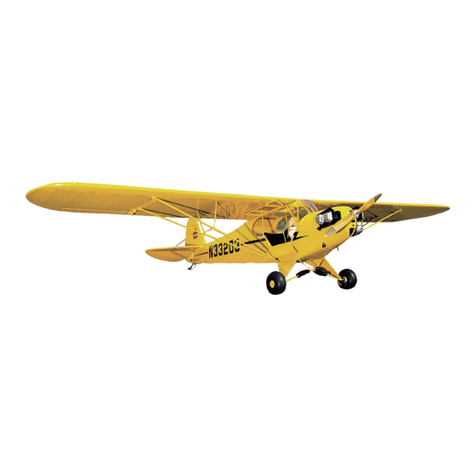
SIG
SIG Piper J3 Cub Instruction Manual
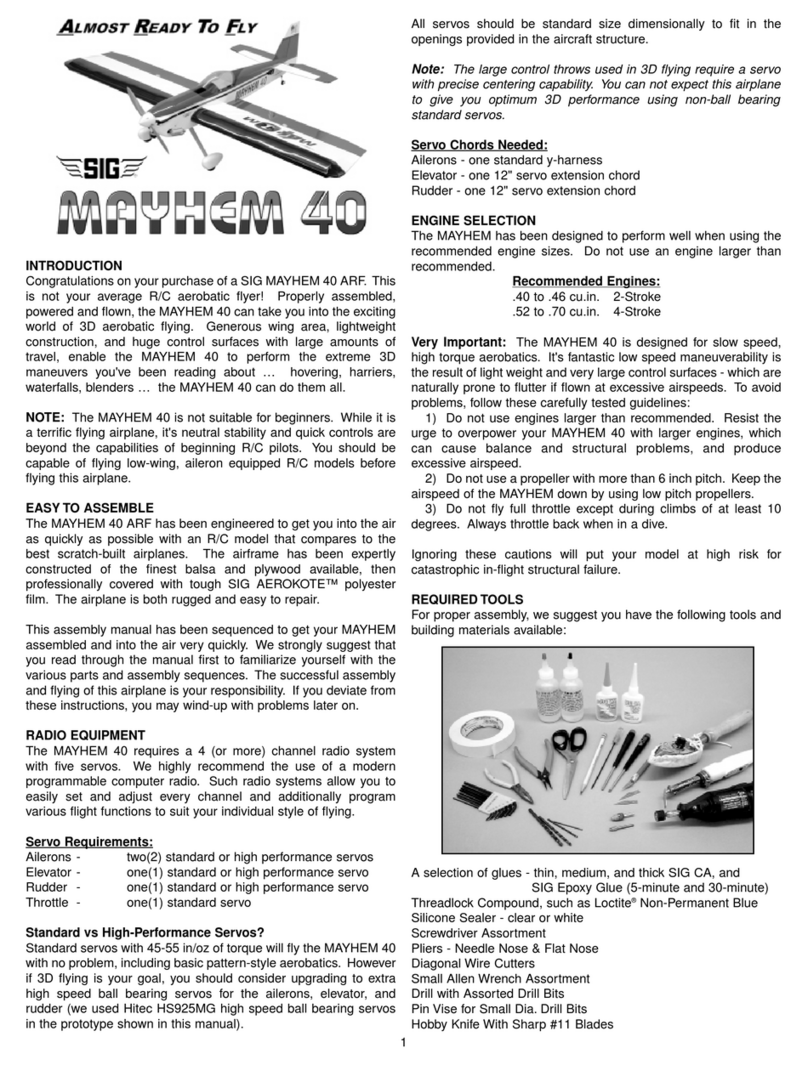
SIG
SIG MAYHEM 40 User manual
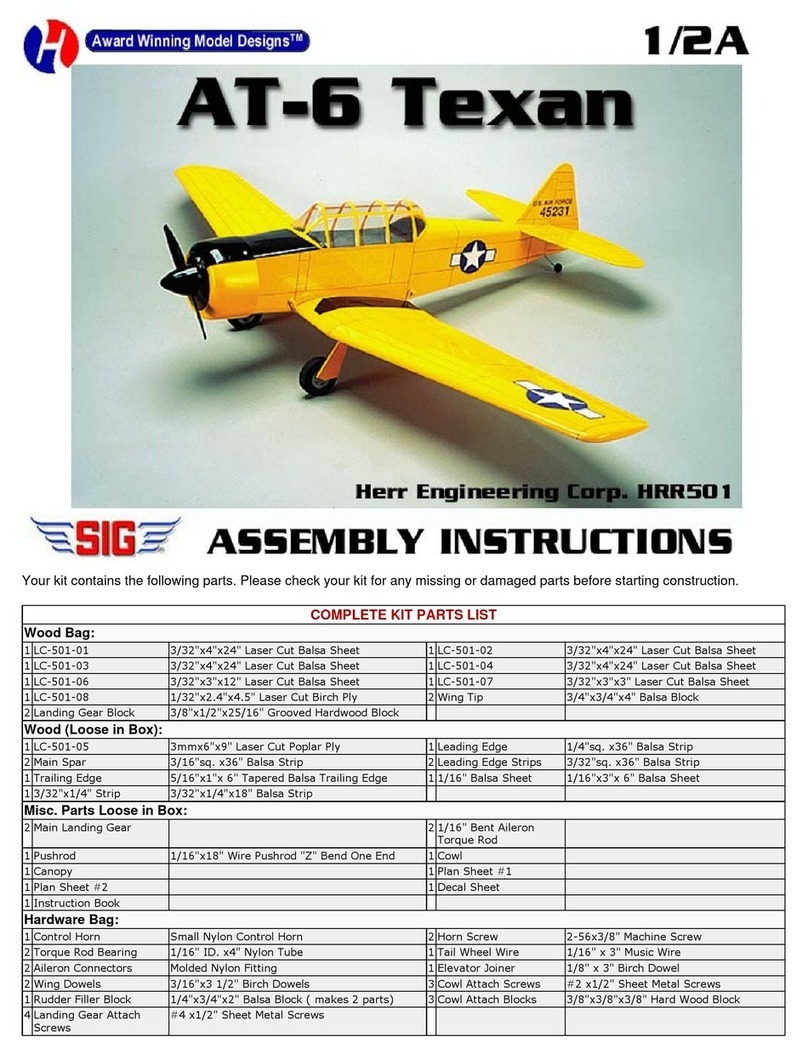
SIG
SIG HRR501 User manual
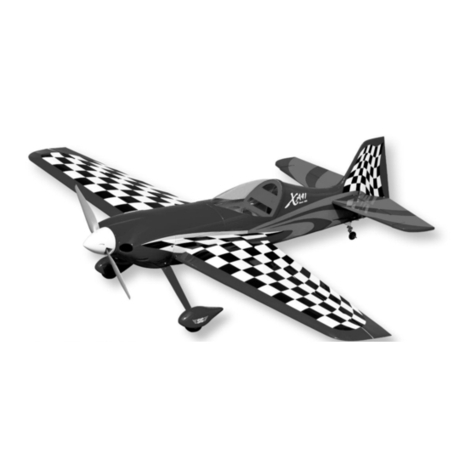
SIG
SIG SBACH XA-41 EP ARF User manual

SIG
SIG SUN DANCER 50 User manual
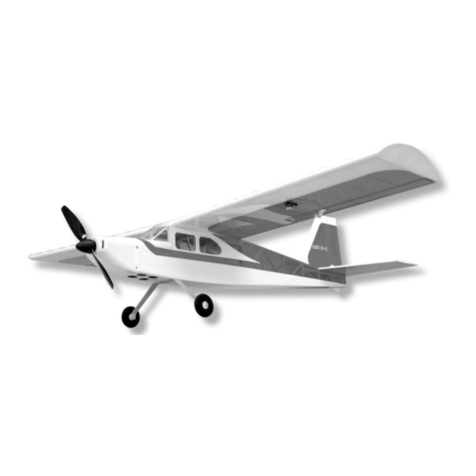
SIG
SIG KADET EP-42B User manual

SIG
SIG T-Clips 70 User manual

SIG
SIG SUKHOI SU-31 ARF User manual

SIG
SIG Kadet Senior Sport User manual
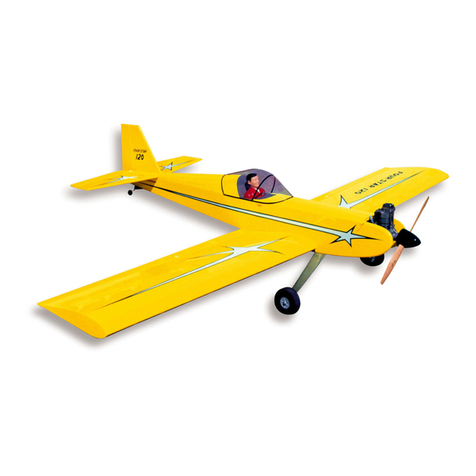
SIG
SIG Four-Star 120 Instruction Manual

SIG
SIG HERR FAIRCHILD 24 User manual
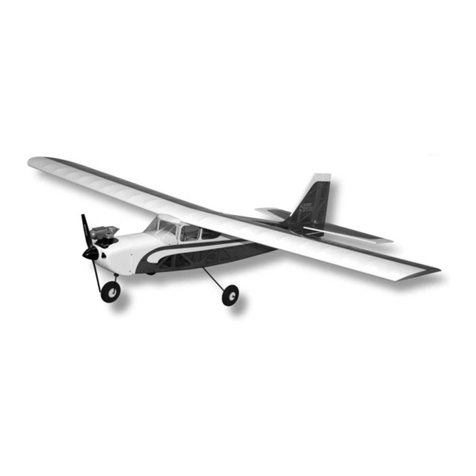
SIG
SIG Kadet Senior User manual

SIG
SIG King Kobra Instruction Manual
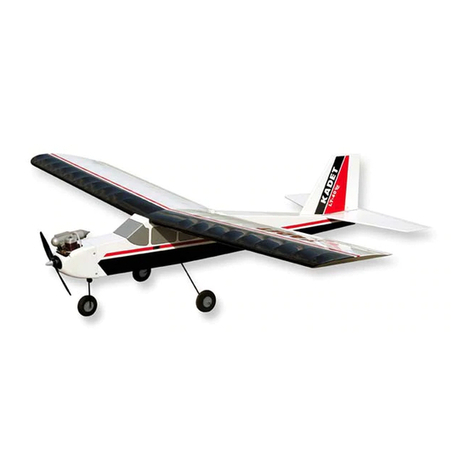
SIG
SIG KADET LT-40 EG User manual
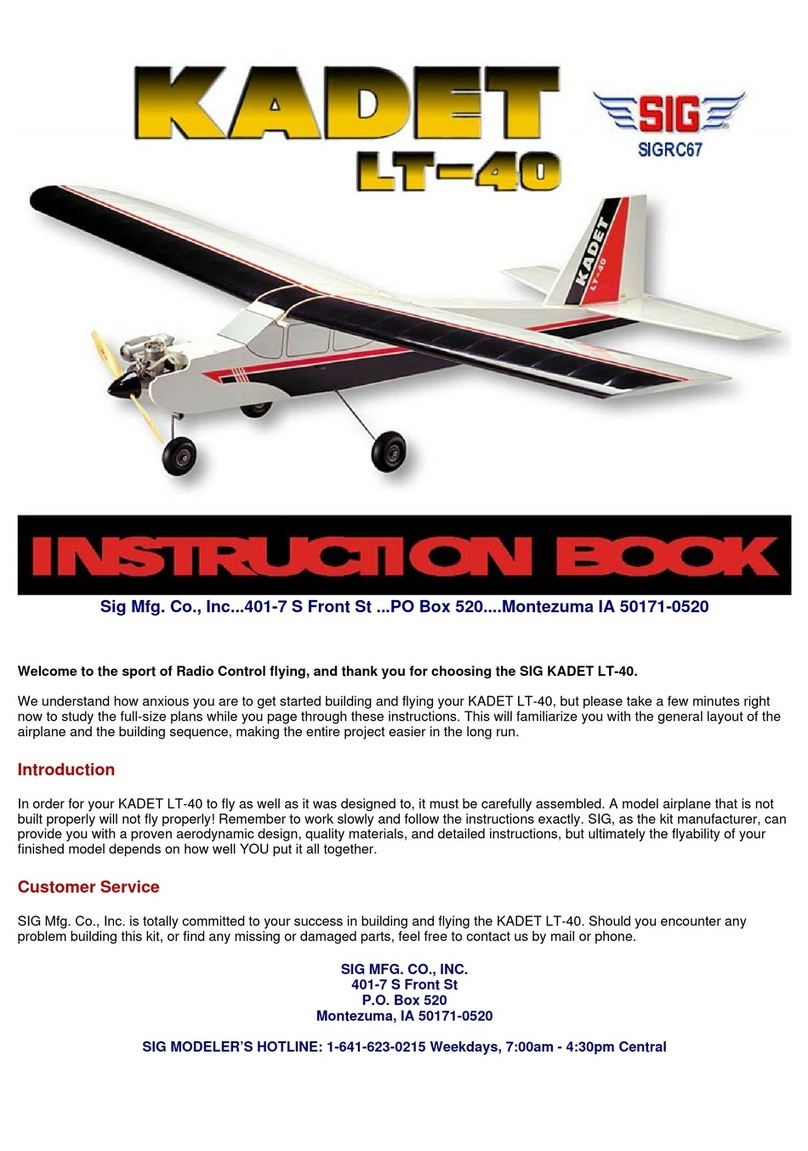
SIG
SIG SIGRC44 User manual
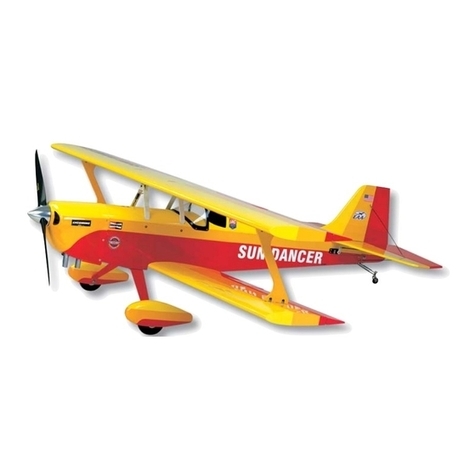
SIG
SIG Sun Dancer User manual

SIG
SIG EDGE 540T User manual
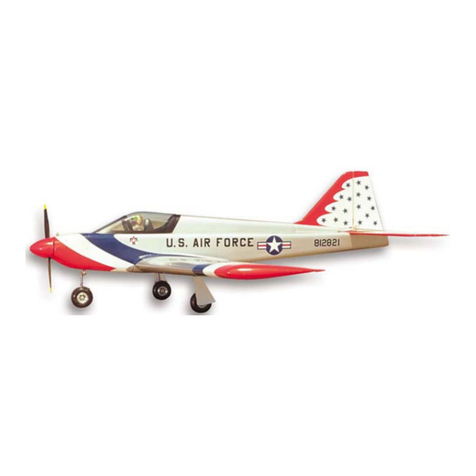
SIG
SIG Kougar MARK II SIGRC35 Instruction Manual

SIG
SIG Sealane User manual
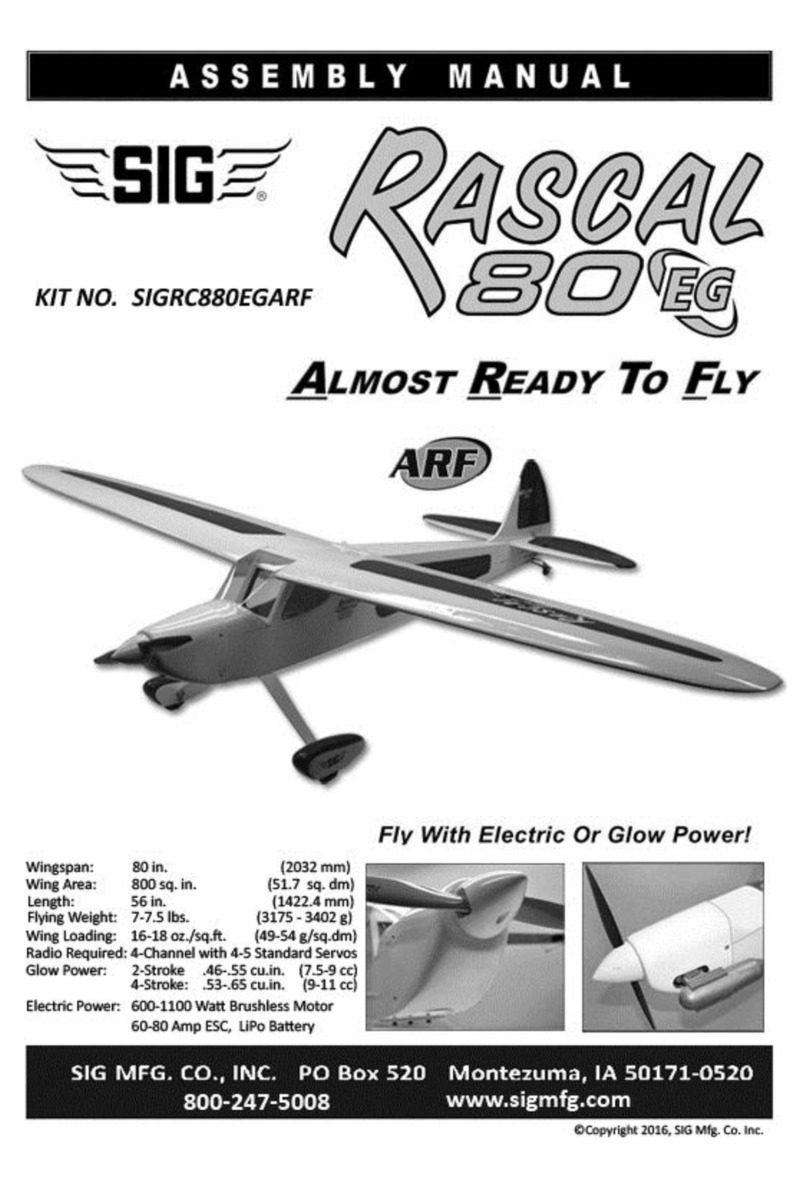
SIG
SIG Rascal 80 eg User manual
